
The Bottom Line
Introduction, Specifications, and Pricing
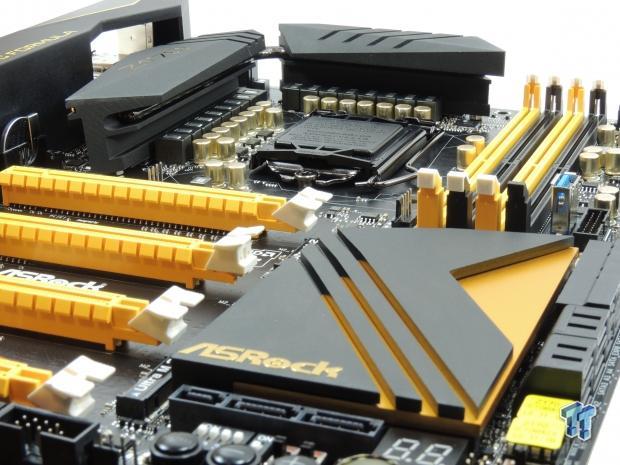
Intel's Z170 chipset is an interesting one, it's not only rich in connectivity, but I am told it is harder than previous platforms to tune for overclocking. There is an enormous amount of backend BIOS tweaks and tuning that takes place to make certain boards capable of high overclocks, specifically memory overclocking. During the Intel Developer Forum in San Francisco recently, we saw one Z170 motherboard tuned specifically for overclocking, the Z170 OC Formula. It took world records left and right, and recently ASRock officially launched the board.
I have already reviewed one of ASRock's mainstream offerings and one of their gaming motherboards, but today I have their sole overclocking model in the test bench ready to undergo a battery of tests and overclocking. ASRock's recent press releases about all the world records that the Z170 OC Formula has taken does set the bar high, I expect the board to not only perform well but also be easily tuned. ASRock does seem to have focused a fair amount on the Z170 OC Formula, so let's see how it does.
Specifications

The Z170 OC Formula is one of few boards whose primary purpose is overclocking and breaking world records. One of the many advantages the Z170 OC Formula has over other boards are the three full speed M.2 slots which can RAID, offering the hardware needed to take down PCMark world records. Apart from that, the Z170 OC Formula offers 4-way CrossFireX, 2-way SLI, support for very fast DDR4 modules, Purity Sound 3, Intel LAN, and even USB 3.1.
Pricing
The Z170 OC Formula is priced at $253 on Newegg, but is currently out of stock. This price does seem to be in line with the features offered with the board. We are early providing you with this review, but we expect stock to arrive at most stores soon.
Packaging and the Z170 OC Formula
Packaging and the Board
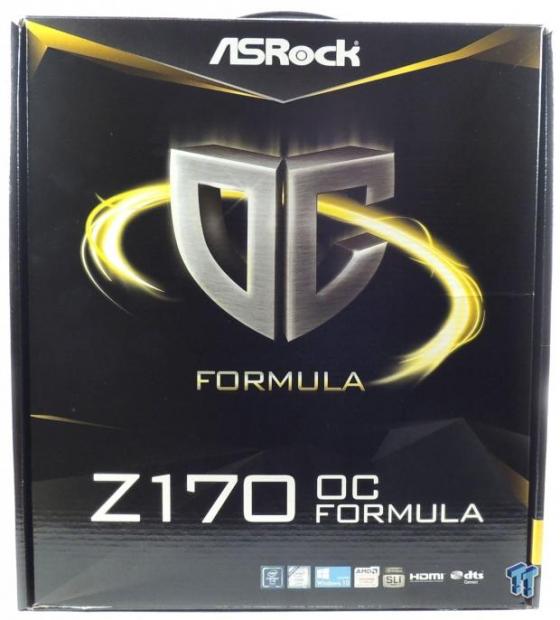
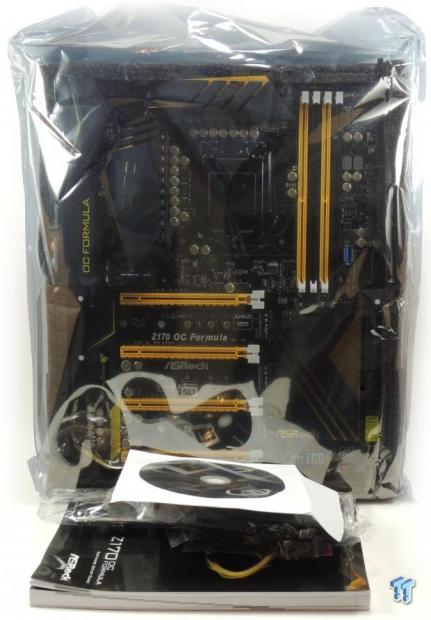
The box is pretty much the standard box we have seen from ASRock for their OC Formula lineup. The packaging is well done with anti-static foam packaging and an anti-static bag for the motherboard.
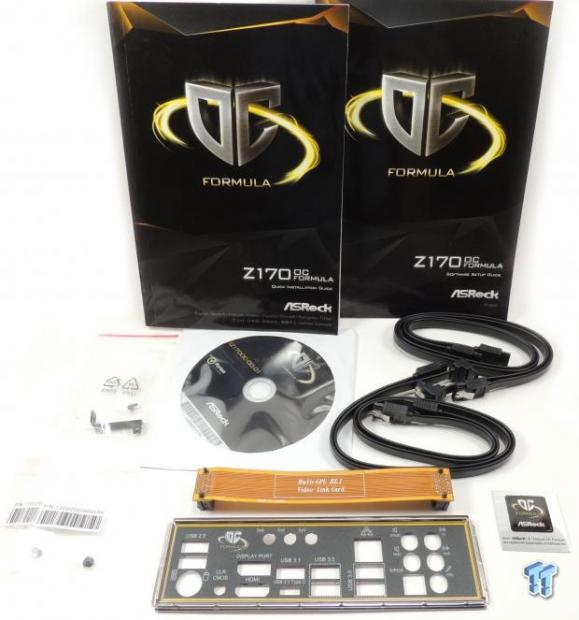
Accessories include 4x SATA6G cables, IO shield, bracket and screws for WIFI/BT module, 2-Way extended SLI bridge, screws for M.2, driver DVD, case badge, and manuals.
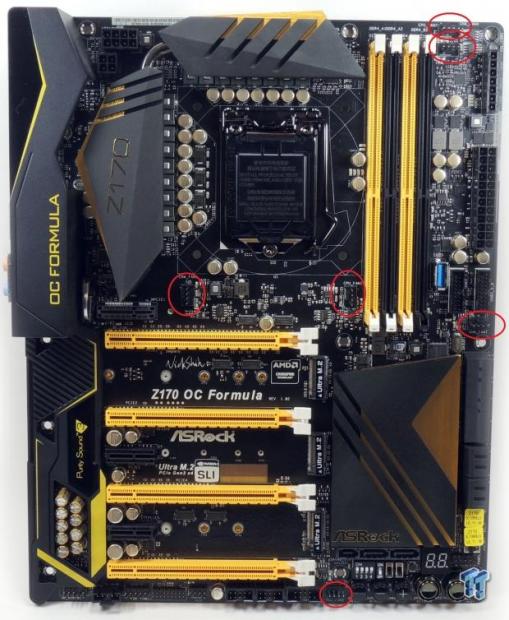
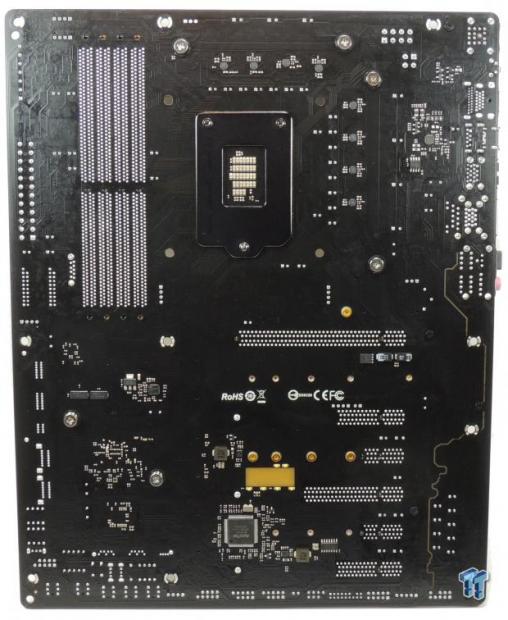
The ASRock Z170 OC Formula has six fan headers. They are all circled in red and all support PWM and voltage mode fans. ASRock is sticking with their yellow and black color theme which we have come to expect from their OC Formula lineup, except this time they have added plastic shields that cover up the back panel IO and audio area.
For Z170, ASRock has moved towards more black with hints of gold/yellow, and they did a nice job trying to match the heat sinks with the yellow slots. The motherboard is also loaded with overclocking features and they are pretty prominent in the lower right-hand corner of the board. The back of the board does have some chips and components, so you should be careful when installing the board in a case. While the PCB divide for the audio is not illuminated, there is an ASRock OC Formula logo which is illuminated in the center of the PCI-E area. I will show you what it looks like on the Test Setup page.
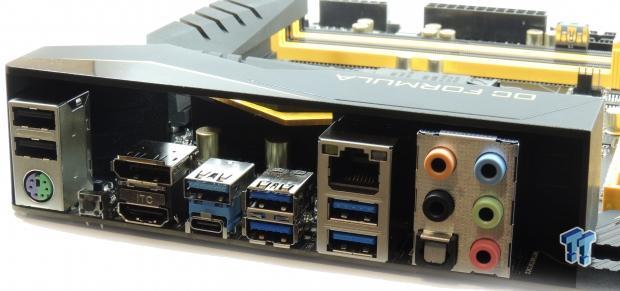
The IO panel features a clear CMOS button, 4x USB 3.0 ports, 1x USB 3.1 Type-A, 1x USB 3.1 Type-C, 2x USB 2.0 ports, Intel GBit NIC, HDMI, DisplayPort, PS/2 KB/Mouse, and 7.1 audio outputs with TOSLINK.
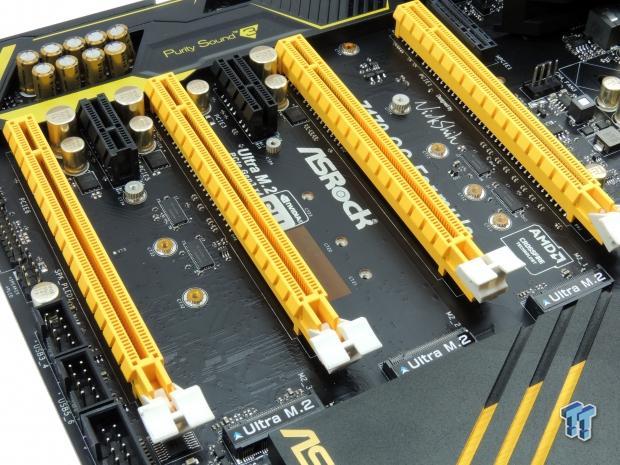
There are three Ultra M.2 slots which each run at 4x PCI-E 3.0 and each one shares bandwidth with two of Intel's SATA6G ports/one SATA Express port so that they can RAID. The PCI-E layout isn't too difficult to figure out; all the PCI-E slots except one of the PCI-E 1x slots (PCIE5) are PCI-E 3.0. The first, third, and last PCI-E 16x slots are wired to the CPU. You can run 16x/0x/0x, 8x/8x/0x, or 8x/4x/4x on the first, third, and fourth 16x PCI-E slots. The second PCI-E slot is wired to the PCH at 4x PCI-E 3.0 as is one of the PCI-E 1x flex slots. Since AMD GPUs can handle 4x per GPU in multi-GPU configurations, the board can run 4-way CrossFireX, but only 2-way SLI like most other boards.
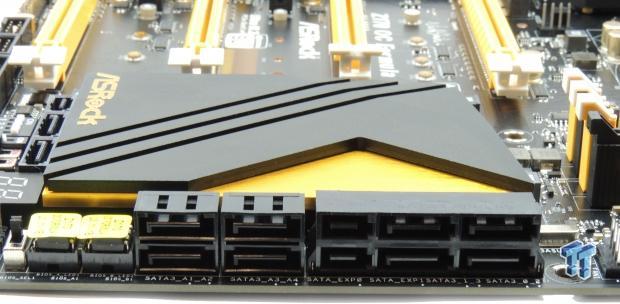
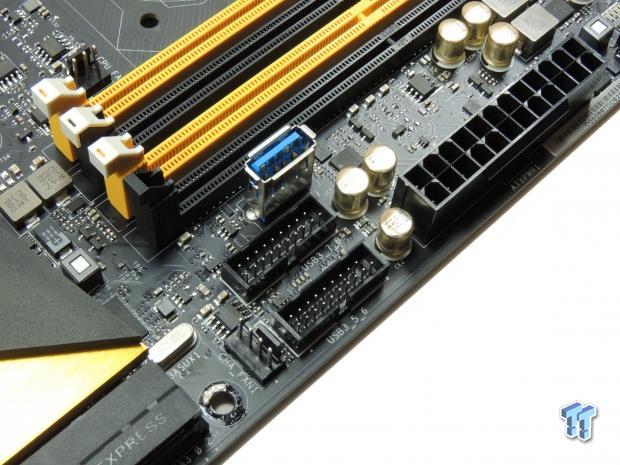
Each SATA Express/2 SATA ports shares its bandwidth with one of the M.2 slots, so if you occupy all the M.2 slots, then all the SATA Express/Intel SATA6G ports will be disabled. However, ASRock provides four ports through two ASMedia SATA6G controllers, so you still have some SATA even if it isn't from Intel. ASRock provides two internal USB 3.0 headers as well as a vertical USB 3.0 port for easy USB stick access.
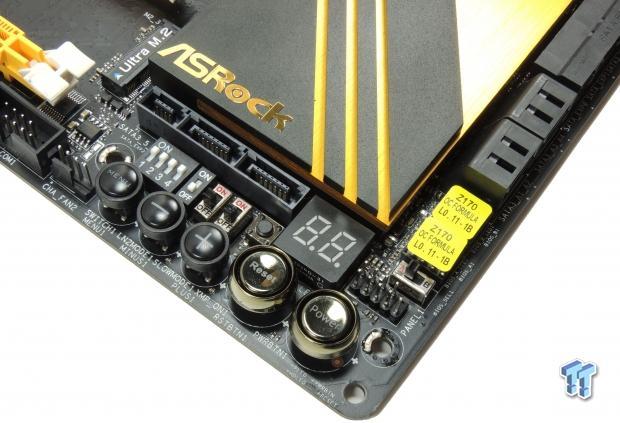
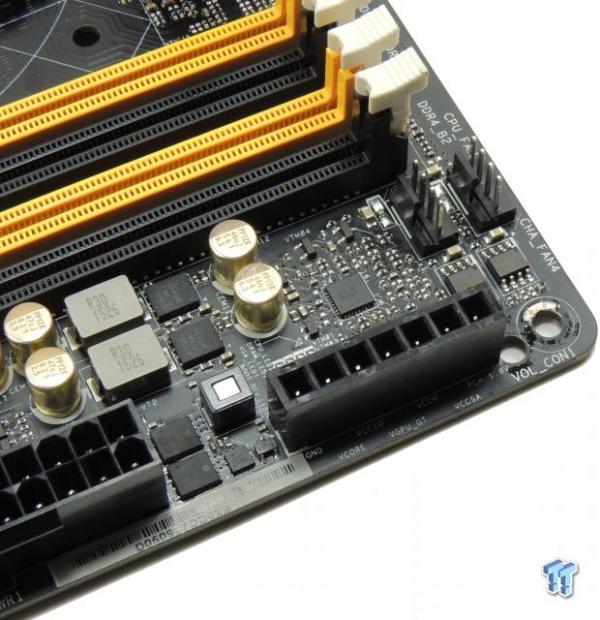
This board is loaded to the brim with overclocking features. While it has the typical power, reset, clear CMOS buttons, POST Code display, and voltage read points, it also has many more overclocking features. Two BIOS ROMs can be individually selected through a switch on the PCB, there are DIP switches allowing you to disable each of the PCI-E 16x slots, and Rapid OC allows you to change BLCK, multipliers, and voltages in windows on-the-fly with the plus/minus/menu buttons. There is a slow mode switch to reduce the CPU multipliers to their lowest frequency, an LN2 switch to help with subzero temperatures, a Direct Key button to get you directly into the UEFI, and an XMP switch for the novice overclocker to enable XMP without entering the UEFI.
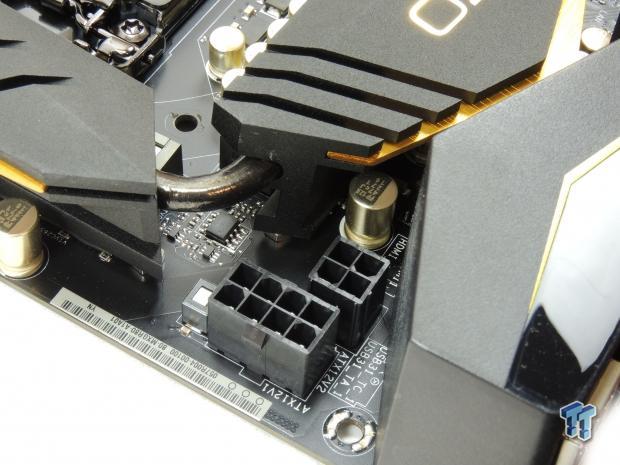
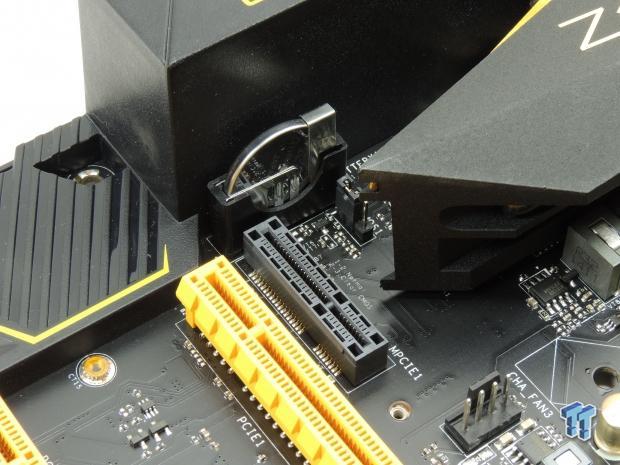
ASRock includes an extra 4-pin CPU power port for extra power during extreme overclocking. The CMOS battery is vertically installed in a slot above the first PCI-E slot so that it can be removed without having to remove a video card. There is also a mPCIe slot for a WIFI/BT module.
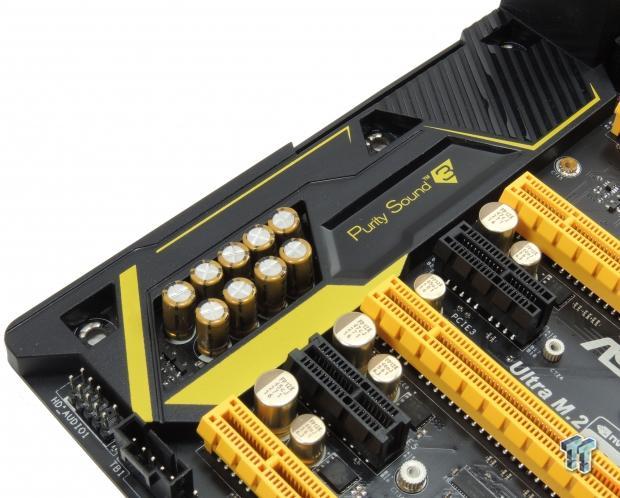
ASRock's third installment of their upgraded Realtek audio is known as Purity Sound 3, and the gold Nichicon audio capacitors match the yellow of the plastic shield.
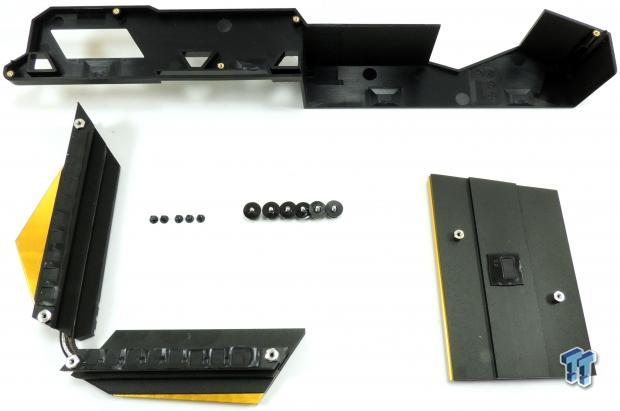
While the shield is plastic and the heat sinks are a mixture of aluminum and copper, they are all held down by screws, which is excellent for long term contact between the heat sinks and the PCB.
ASRock Z170 OC Formula Circuit Analysis
Circuit Analysis
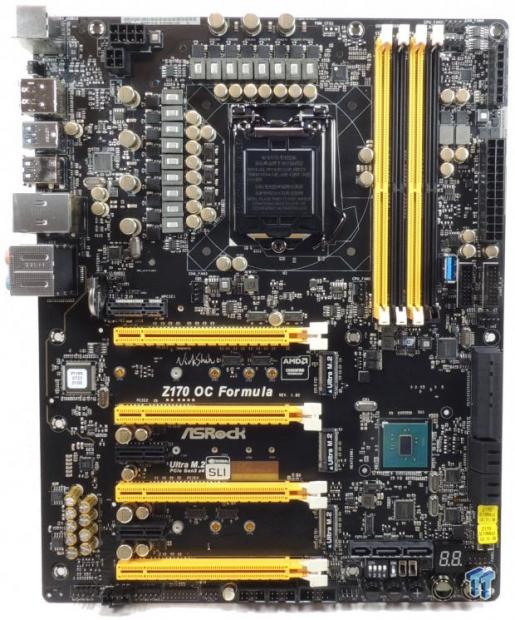
The Z170 OC Formula looks nice in the nude.
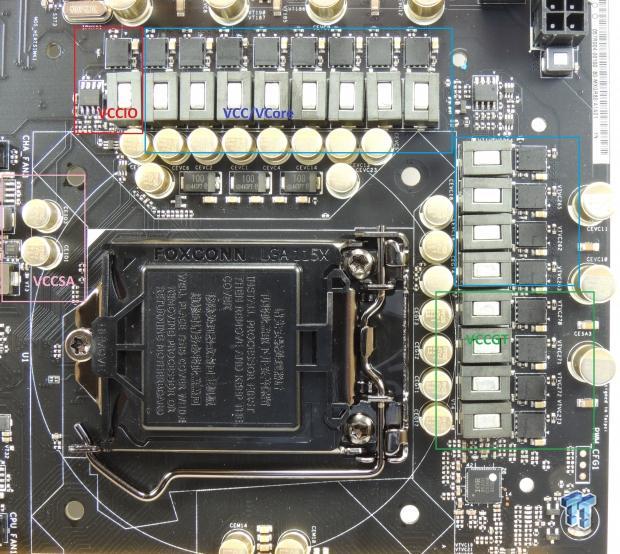
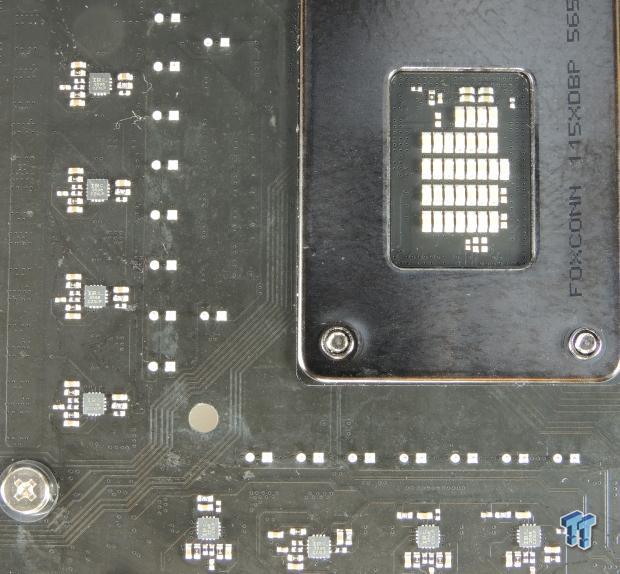
If you count the phases this VRM is a 12+4+1+1 phase VRM (VCC + VCCGT+VCCSA+VCCIO). There are four major input rails to the CPU for Z170; VCC (VCore), VCCGT (Graphics core), VCCSA (System Agent), and VCCIO (CPU IO). Counting the phases from the top left to the bottom right, the first single inductor (choke) is in charge of VCCSA, following it are 12 inductors for the CPU VCore and the remaining four are for the VCCGT (graphics). ASRock is using International Rectifier's (now part of Infineon) latest PWM and eight of their doubler/dual driver chips, the IR3598, to double all the PWM's phases to provide 12+4 phases of output for the VCC + VCCGT.
ASRock's Z170 OC Formula uses a much higher phase count digital PWM from International Rectifier instead of the hybrid-digital PWM from Intersil with less true phases. The IR PWM is also better suited for overclocking. ASRock is using their 60A high current inductors as well as a mixture of 12K gold capacitors and a few tantalums and MLCCs for the output filter. Needless to say, this VRM is overkill for Z170, but in some cases overkill is what people want and ASRock is delivering.
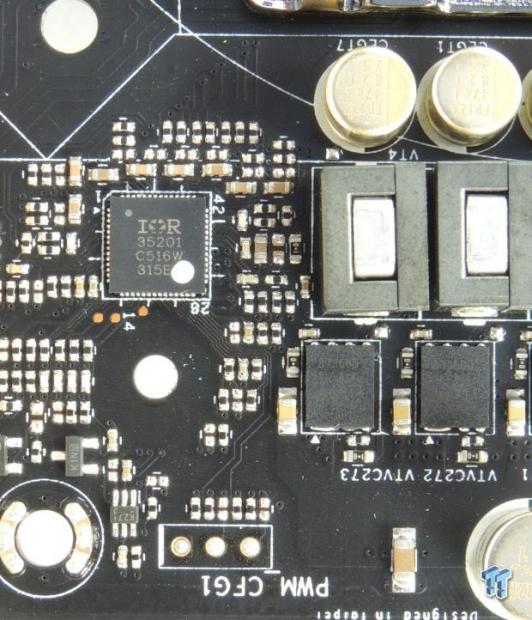
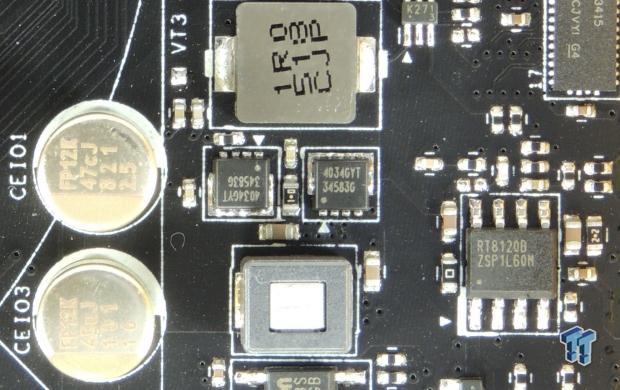
ASRock put International Rectifier's latest PWM, the IR35201, in charge of the phases. The IR35201 has two operating modes and ASRock is using the 6+2 phase operation mode, all six phases for the VCC and two phases for the VCCGT are doubled by eight backside IR3598 doublers/dual drivers to 12+4 phases. Each phase consists of a Texas Instruments CSD87350Q5D, which are 25A@90% efficiency NexFETs, and have integrated high-side and low-side MOSFETs in a single package. This is a very powerful VRM design for overclockers. The VCCSA is using a single NexFET and is controlled by a Richtek RT8120 (not pictured), and the VCCIO is using two Advanced Power Electronics AP4034GYT for the high-side and low-side and is using a Richtek RT8120 as the PWM (pictured on the right).

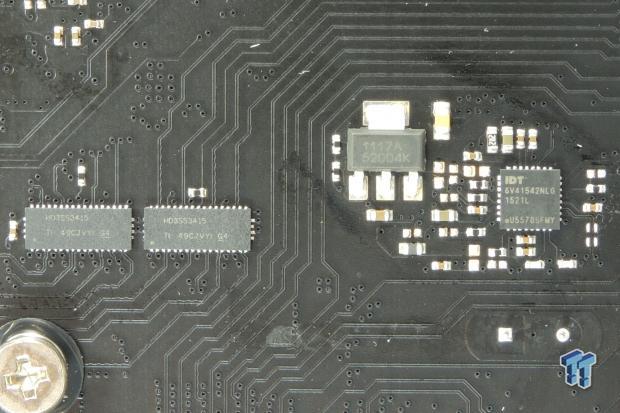
The memory VRM is controlled by a UPI Semiconductor UP1674 (no datasheet), which I would think provides at least two phases of output. The same high quality Texas Instruments CSD87350Q5D NexFETs are used for the memory VRM in a two phase configuration. The memory VRM is enough for any DDR4 arrangement. The Z170 OC Formula also has an external clock generator, an IDT 6V41542NLG, which provides higher BLCK overclocks. Two Texas Instruments HD3SS415 are PCI-E quick switches which switch around all the PCI-E bandwidth system wide.
ASRock Z170 OC Formula Circuit Analysis Continued
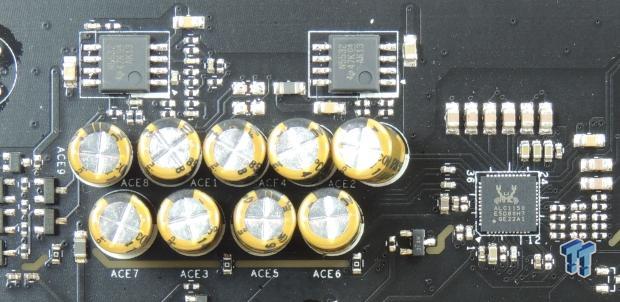
Although the Z170 OC Formula is an overclocking motherboard, ASRock has still added their upgraded Realtek audio. An ALC1150 and two Texas Instruments NE5532 amplifiers are used for the rear and front headphone outputs. Nine Nichicon Gold series audio capacitors are also used specifically for the audio section of the motherboard.
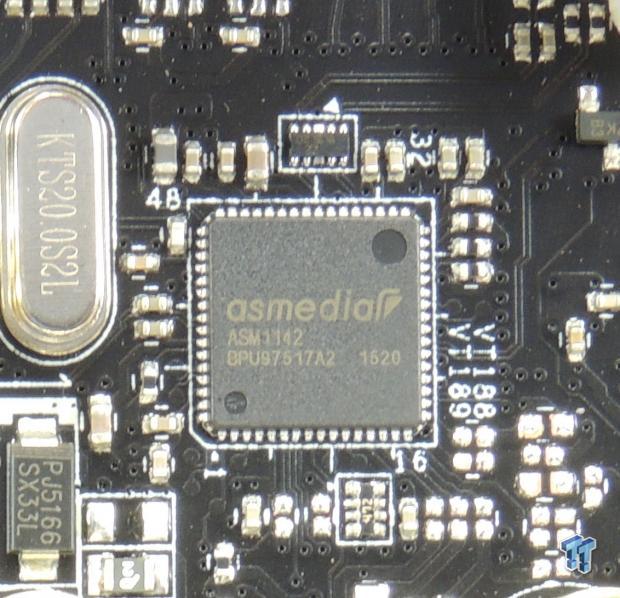
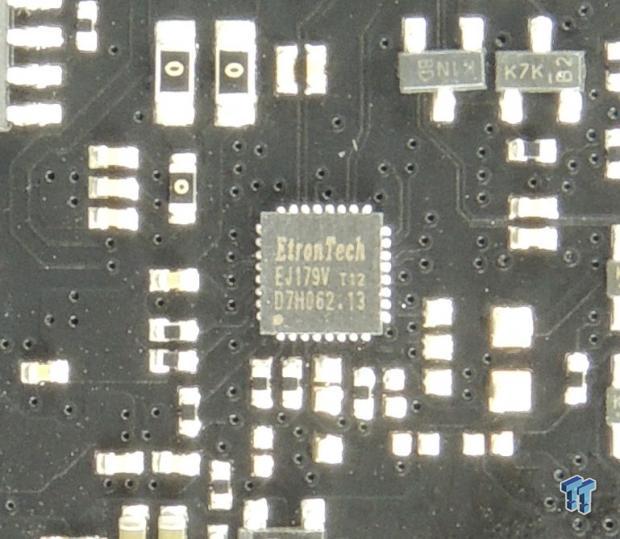
An ASMedia ASM1142 is used to provide two USB 3.1 ports, one Type-C and one Type-A. An EtronTech EJ179V located on the back of the PCB is used as a USB 3.1 Type-C switch.
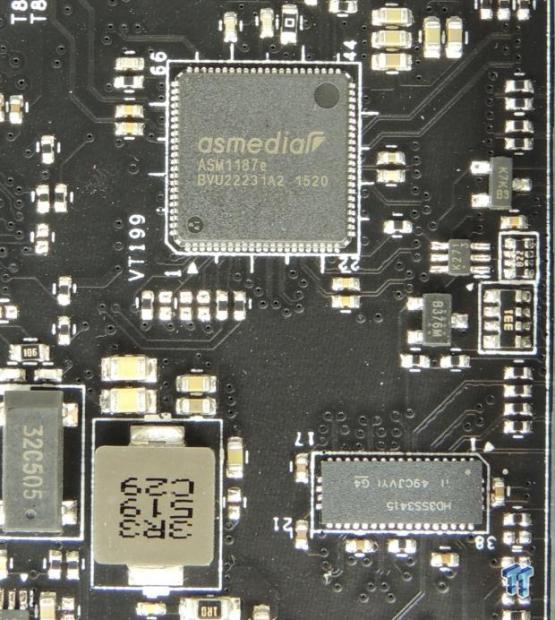
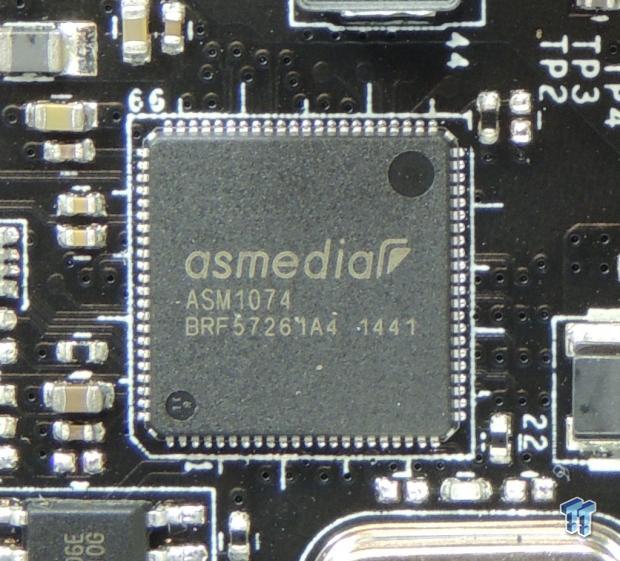
An ASMedia ASM1187e provides multiple PCI-E 2.0 outputs from a single PCI-E 3.0 input. One of the PCI-E 3.0 1x slots is connected to this chip. Extra controllers that don't require PCI-E 3.0 get their bandwidth from this chip, such as the ASM1061 used for extra SATA. The ASMedia ASM1074 is used as a 1:4 USB 3.0 hub for the USB 3.0 headers.
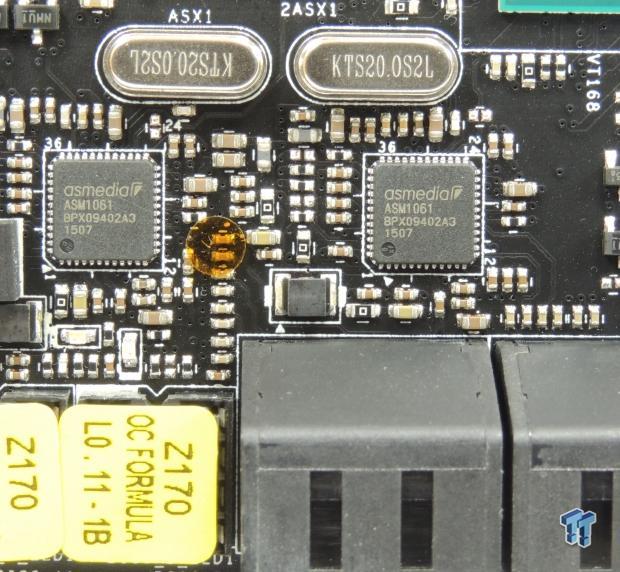
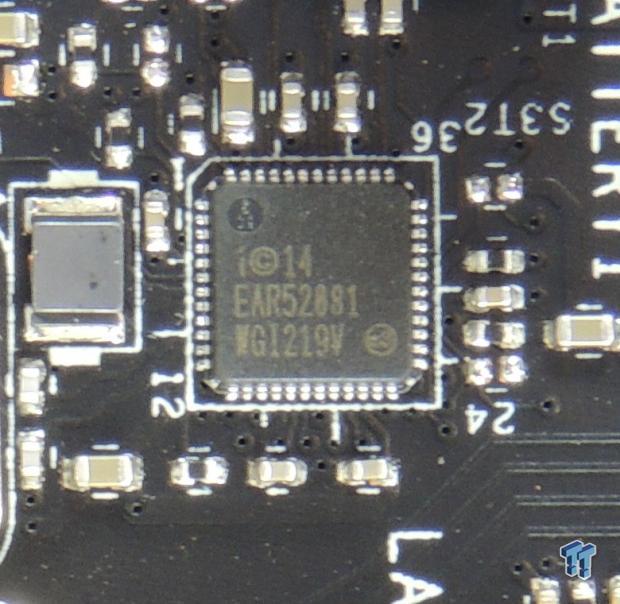
Two ASMedia ASM1061 provide a total of four extra SATA ports. An Intel WGI219V is a PHY which provides Intel LAN.
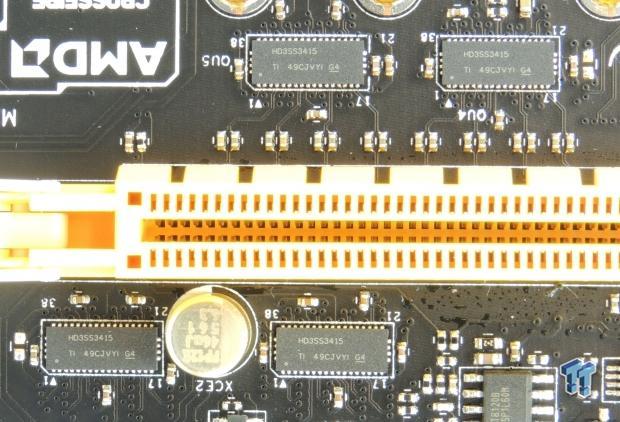
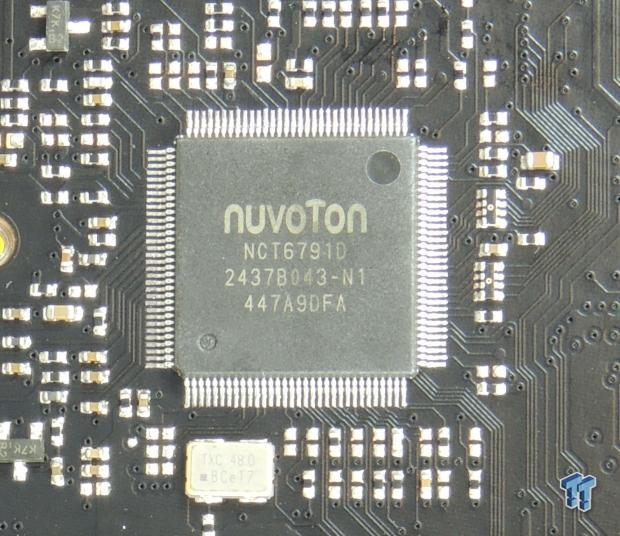
ASRock uses nine Texas Instruments HD3SS3415 which are PCI-E 3.0 quick switches; each can switch two lanes of PCI-E 3.0. Six are used to switch PCI-E lanes from the CPU to three PCI-E 16x slots. The remaining three are used to switch 2x PCI-E 3.0/ 2x SATA between each SATA Express port and each M.2 connector. A nuvoTon NCT6791D is used as the main Super IO providing voltage, temperature, and fan control and monitoring, as well as the PS/2 port on the back panel.
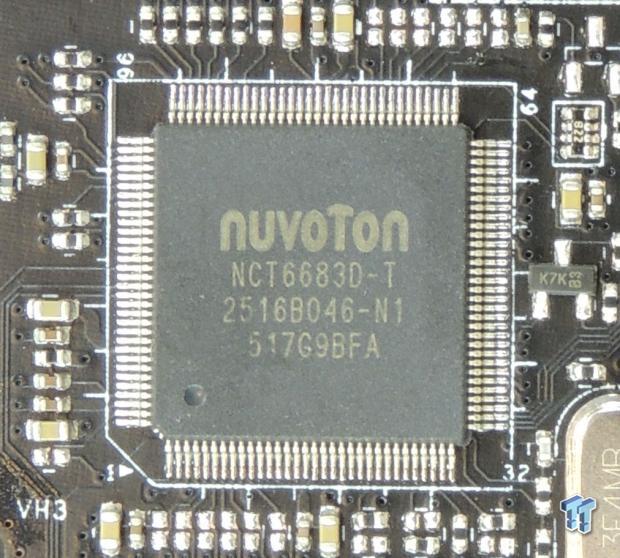
The Z170 OC Formula has many fan headers with PWM capabilities as well as a healthy number of overclocking features which need a controller. The nuvoTOn NCT6683 facilitates these extra features beyond what the main SuperIO can provide.
BIOS and Software
BIOS
ASRock's UEFI consists of a single operating mode with every overclocking setting you need to achieve high overclocks on the Z170 platform. The OC Formula series is known for having special overclocking profiles from ASRock's in-house overclocker, Nick Shih. In fact, there are many profiles that are available for everything from SuperPI benching to Intel's XTU and 6.5GHz profiles for those who use liquid nitrogen.
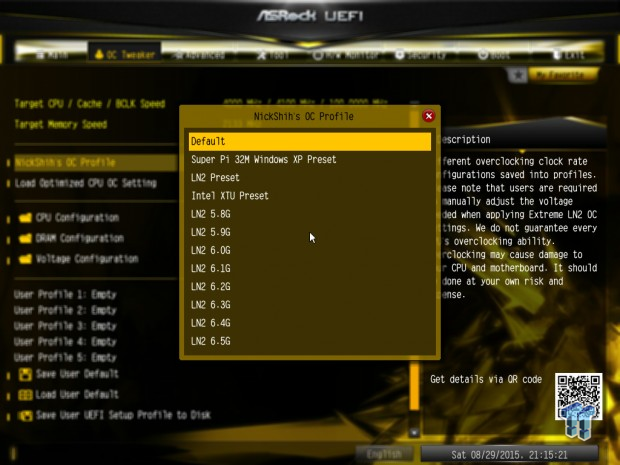
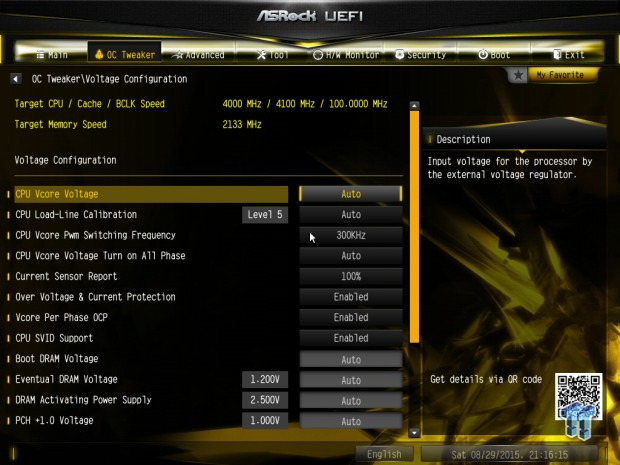
Since the PWM is fully digital, there are many different VCore options which aren't present on some Z170 motherboards, including controls over the external VRM. There are more expansive DRAM options than on many other motherboards. Fan control is also present for each header using multiple SMART fan points, just like on other ASRock Z170 motherboards.
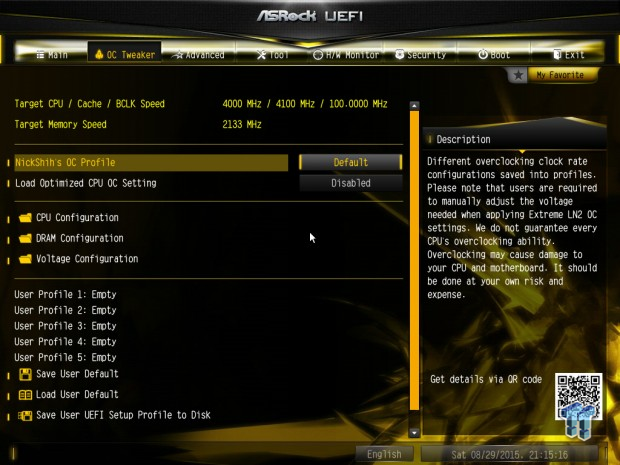
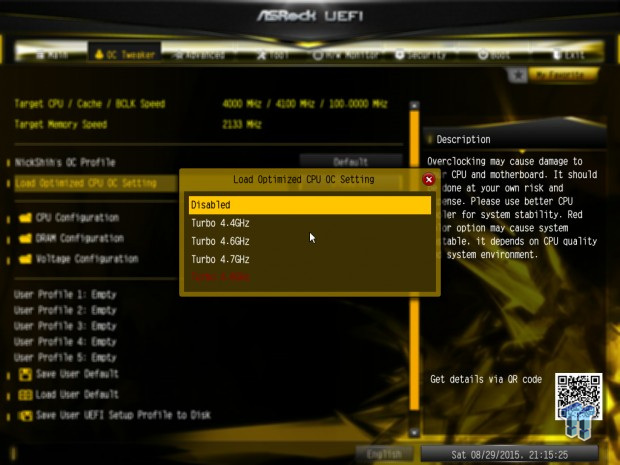
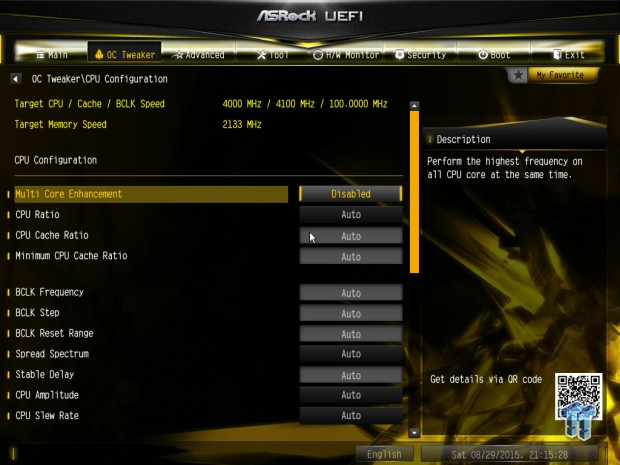
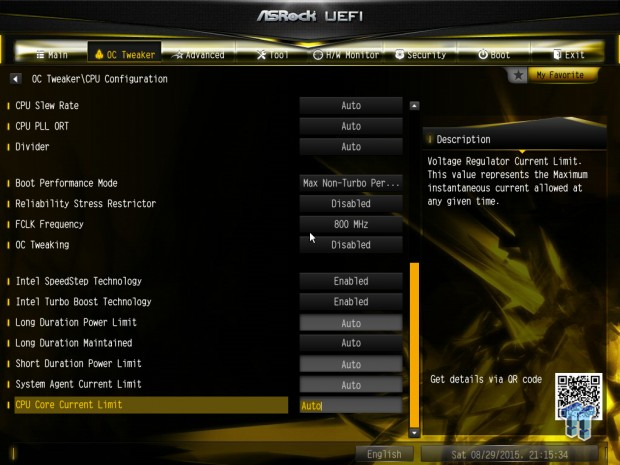
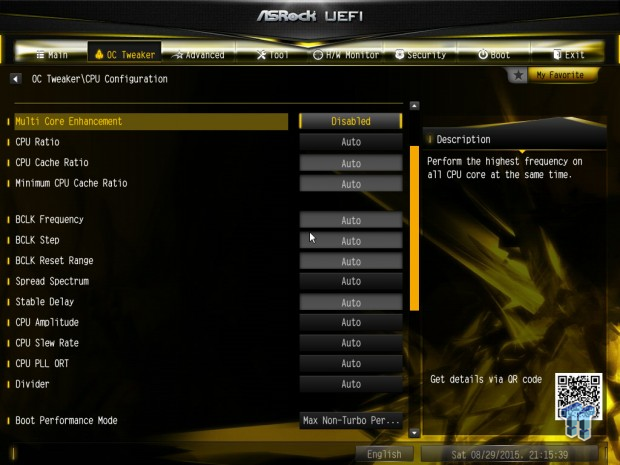
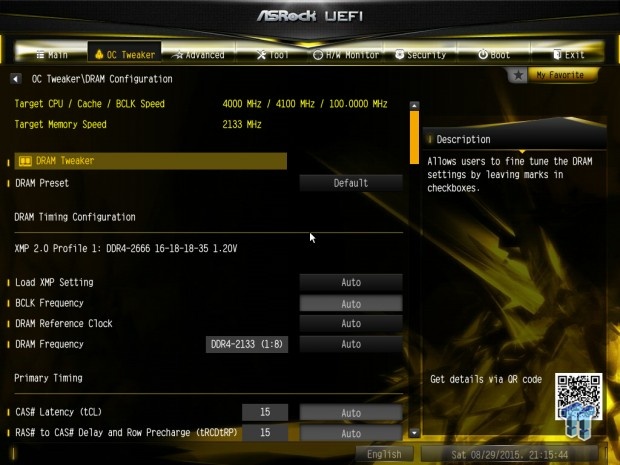
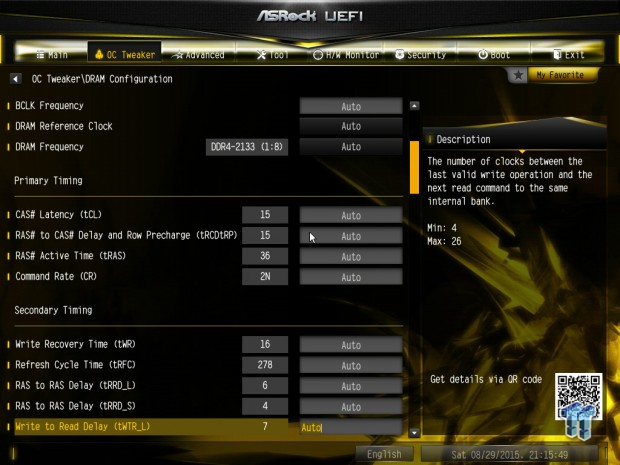
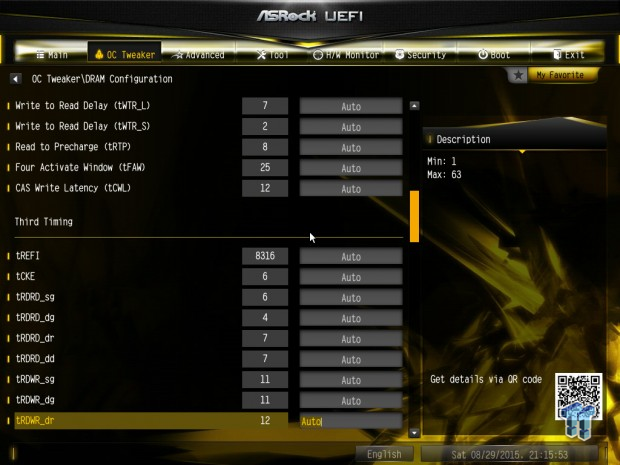
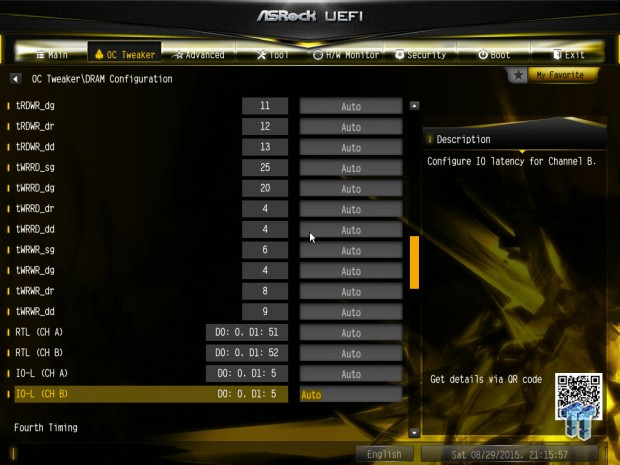
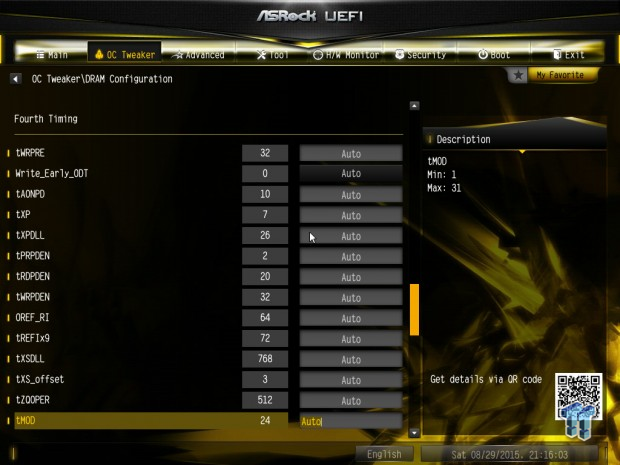
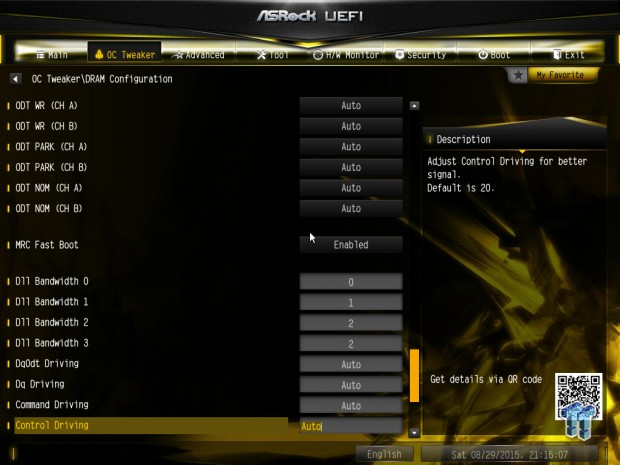
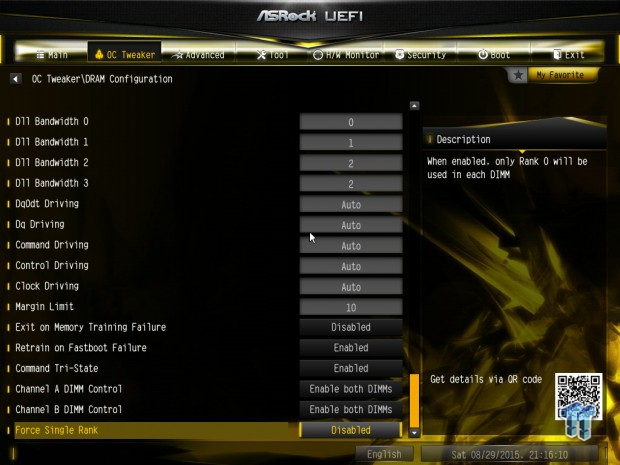
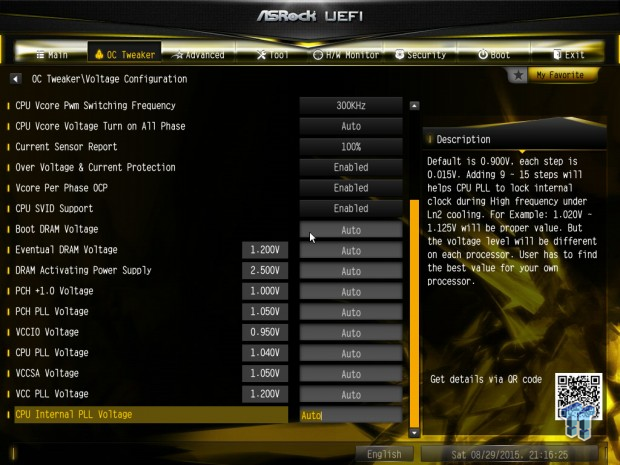
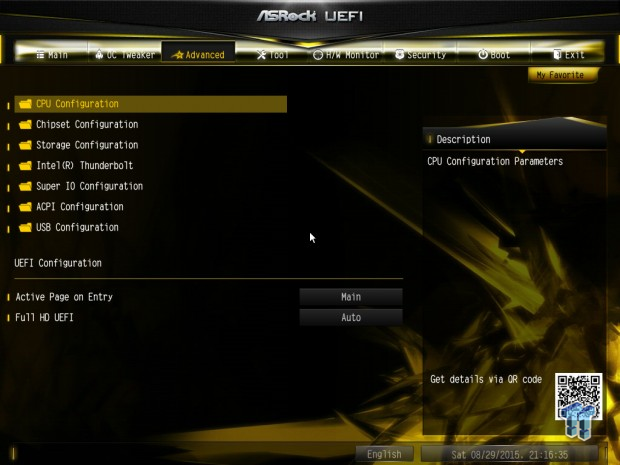
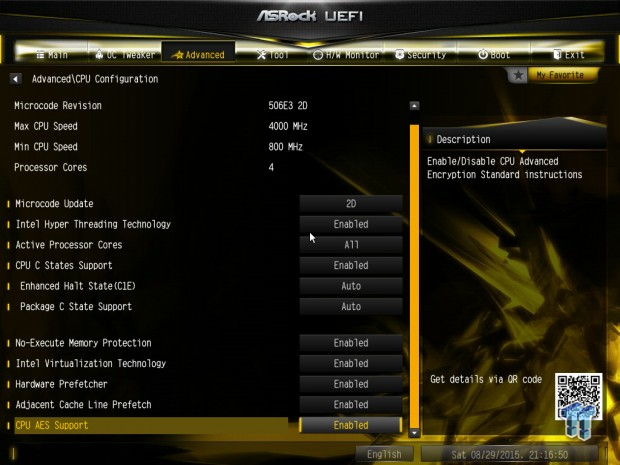
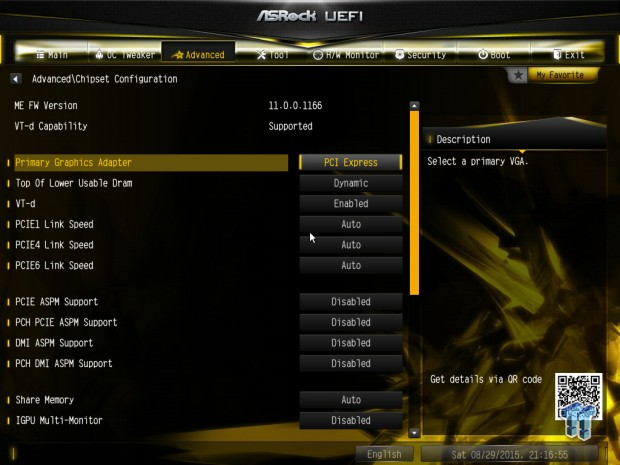
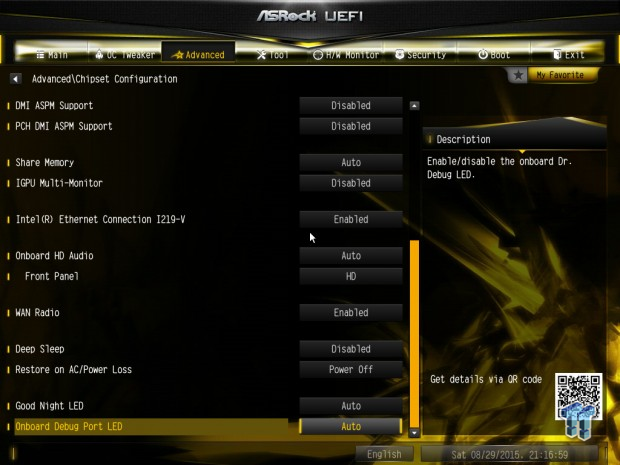
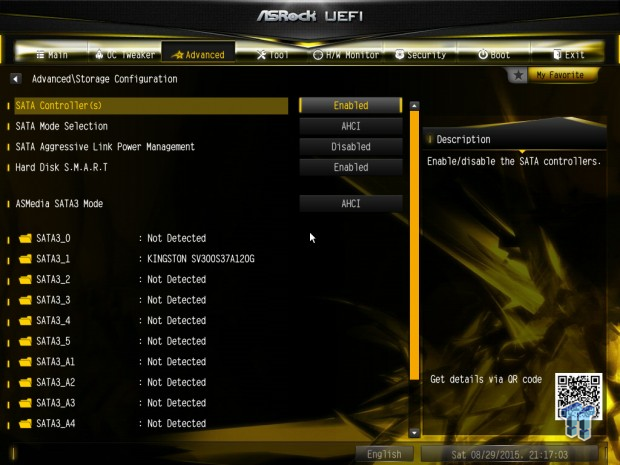
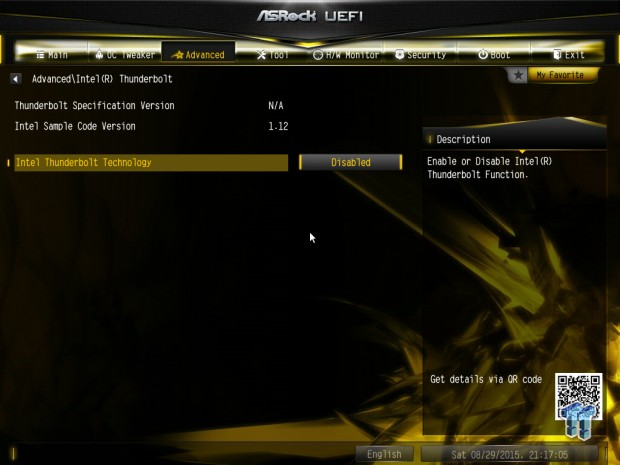
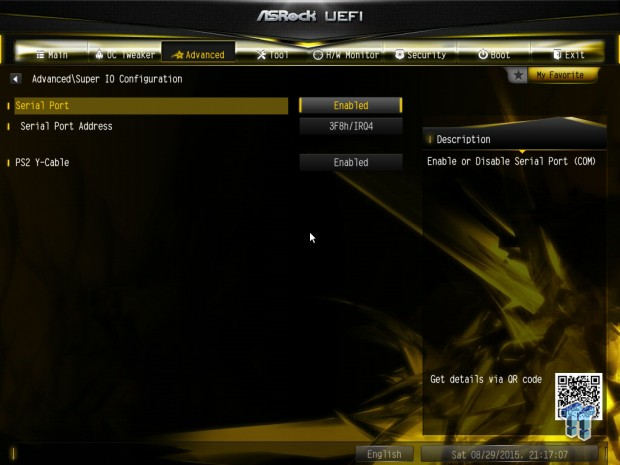
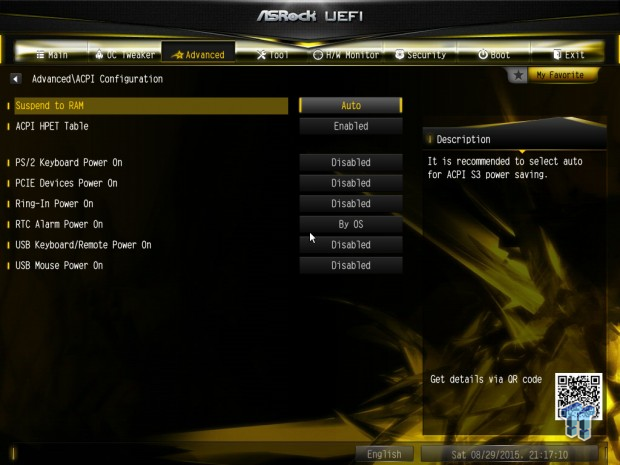
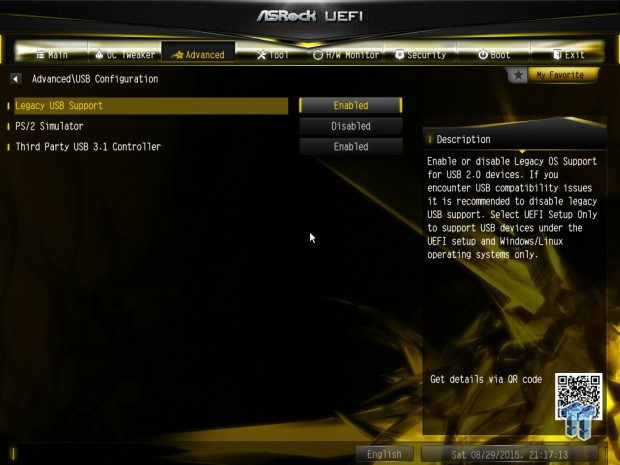
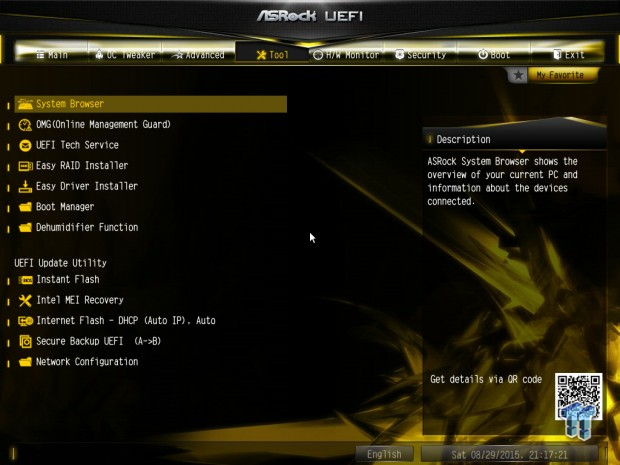
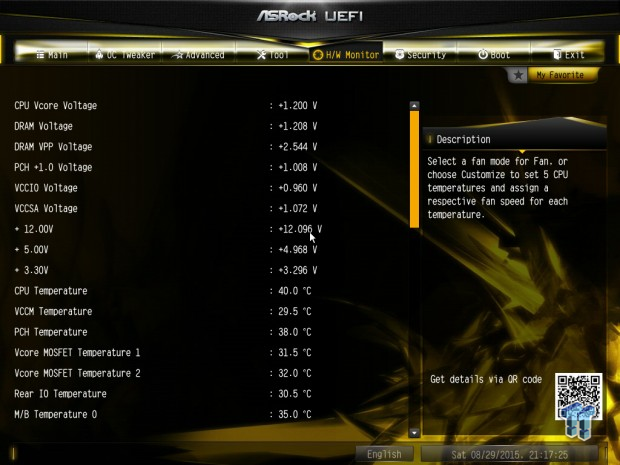
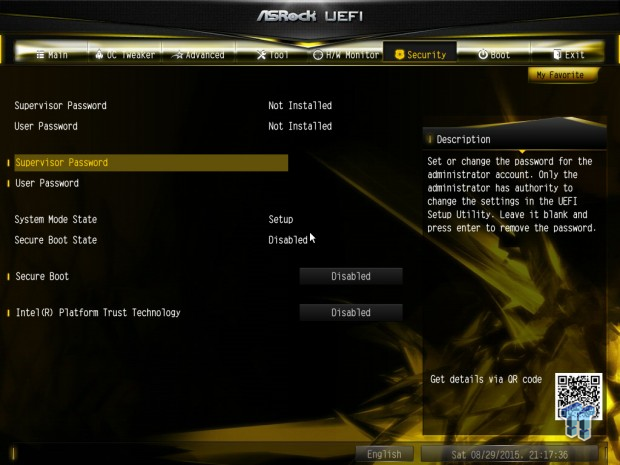
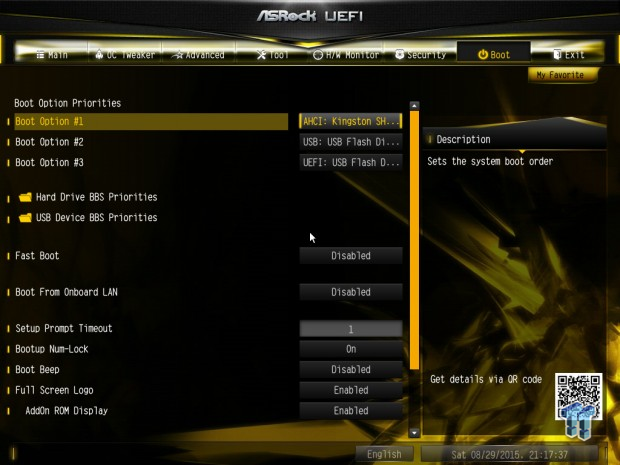
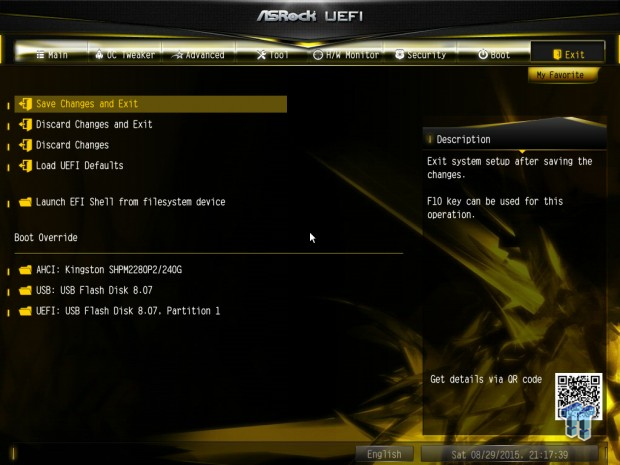
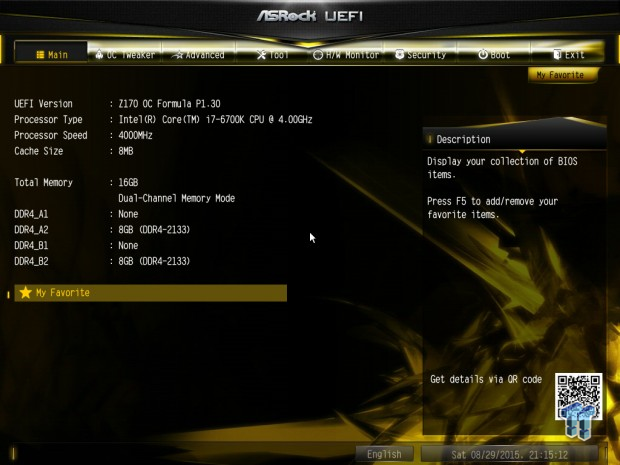
Software
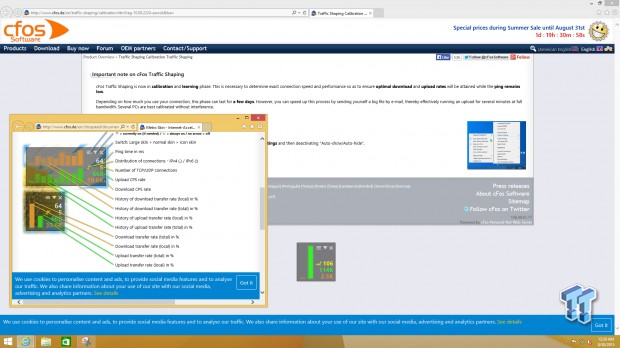
ASRock's Z170 software suite includes CFOS software used for control over the Intel NIC, it is the competitor to Killer's application.
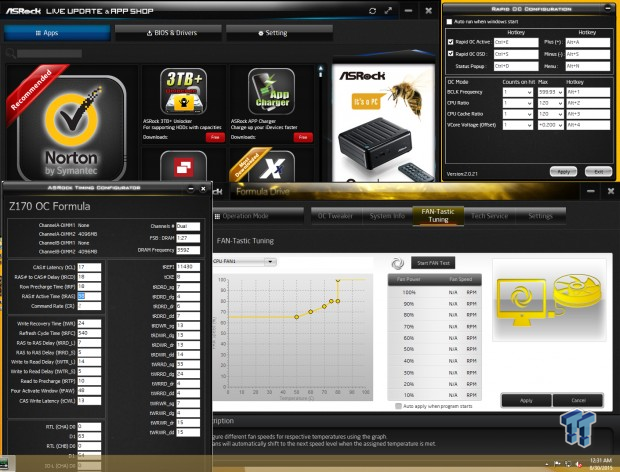
ASRock's Formula Drive is there for in-OS tuning of fan and overclocking settings. The OC Formula series also has a Rapid OC configurator which works with the physical buttons on the PCB to change settings on-the-fly. ASRock's Live Update and App Shop provides updates of ASRock software. ASRock also have their Timing Configurator and CPU-Z skin.
Test System Setup
Steven's Motherboard Test System Specifications
- Motherboard: ASRock Z170 OC Formula
- CPU: Intel Core i7 6700K - Buy from Amazon / Read our review
- Cooler: Corsair H110i GT - Buy from Amazon
- Memory: Corsair Vengeance LPX 16GB (2x8GB) 2666MHz - Buy from Amazon
- Video Card: NVIDIA GeForce GTX 980 - Buy from Amazon / Read our review
- Storage - Boot Drive: Samsung 850 Pro 512GB - Buy from Amazon / Read our review
- Storage - SATA6G Drive: Corsair Force LS 240GB - Buy from Amazon / Read our review
- Storage - M.2 Drive: Kingston HyperX Predator 240GB PCIe x4 - Buy from Amazon
- Storage - USB Drive: Corsair Voyager GS 64GB - Buy from Amazon / Read our review
- Case: Corsair Obsidian 900D - Buy from Amazon / Read our review
- Power Supply: Corsair AX1200i - Buy from Amazon / Read our review
- OS: Microsoft Windows 8.1 Enterprise - Buy from Amazon
- BIOS: P1.3
- Drivers: Intel INF: 10.1.1.19, Intel ME: 11.1.1.1158, Intel USB 3.0 Adaptation Driver: 10.0.0.42, NVIDIA Graphics: 353.82, Realtek 6.0.1.7543, ASMedia USB 3.1: 1.13.26.1, Intel LAN: 20.2.3001
This is the new test bench, and it is designed to test every aspect of the motherboard and IO. I have designed it so that the motherboard sits in a case and is cooled by fans always on at a constant rate to keep the conditions similar for all tests. I have cut out part of the case behind the motherboard so I can get thermal images of the back of the PCB where the VRM heat spreads. System and CPU power measurements are now digitally logged.
I am also using a Netgear Nighthawk X4 AC2350 for our network (including wireless AC) tests. The latest M.2, SSD, and USB technologies are also being utilized to test the maximum potential of the motherboards that are being tested.
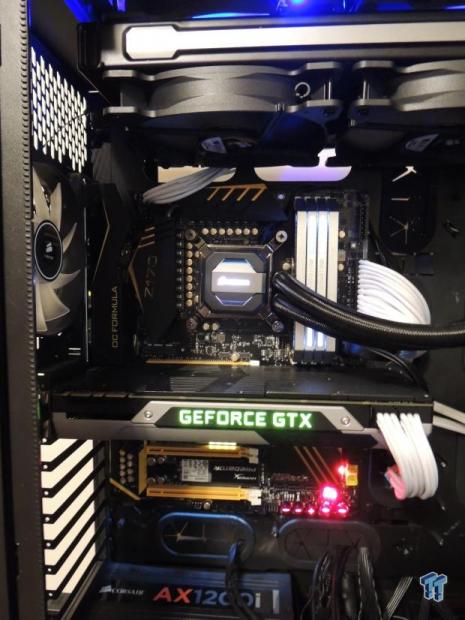
The motherboard's gold accents actually come through quite nice when the motherboard is installed in a case.
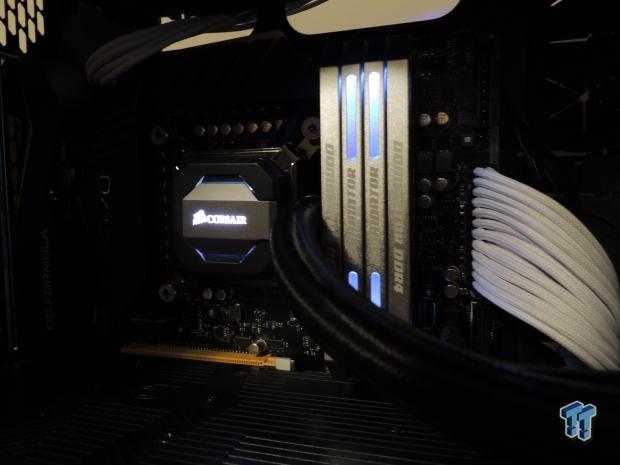
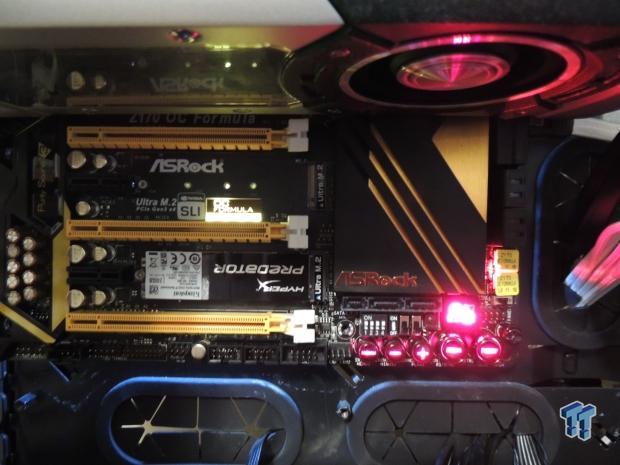
The motherboard's LEDs can all be shut off through the UEFI. There is an OC Formula logo between the second and third PCI-E 16x slots; it lights up showing off the eight layers of the PCB.
Overclocking
Overclocking Results
CPU Overclocking
CPUID recently released their latest CPU-Z version which brings some major changes to the much loved software. One of these changes has made it harder to get a validation at lower stability levels, so it becomes much more troublesome to validate 5.2GHz at 1.5v with every board. While CPU-Z has changed, many motherboards (not this one) don't have LLC. I have to set a higher voltage to compare all these boards at the same voltage. I have decided to reduce the CPU VCore to 1.4v applied (I will measure real VCore at the output capacitors), and see how high I can validate. On most boards its 5.0. I have also decided to add real voltage levels compared to what is set for all motherboards, if they don't have voltage read points I will mark where I got the readings from.
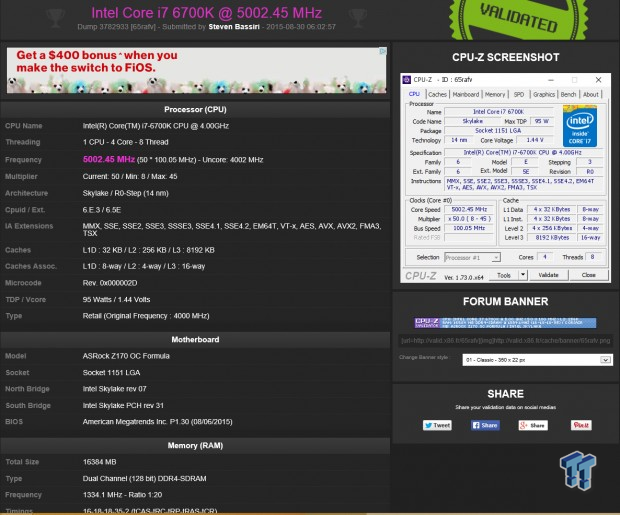
The Z170 OC Formula is doing 5.0GHz.
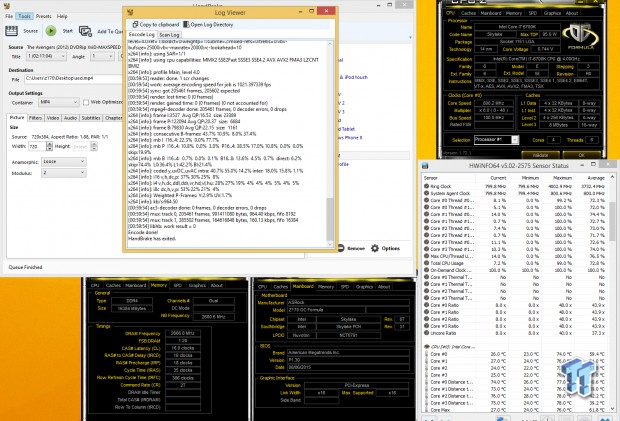
I test stability at 4.8GHz CPU, 4.0GHz Uncore, and 2666MHz on the memory with 1.4v on the VCore. I am using HandBrake to transcode a 2GB video, and it is very telling since it pulls all cores to maximum frequency and load. Handbrake is good for a quick stability check, plus I get a log of the encoding speed and the number of errors. It is very easy for the queue not to finish all the way and just error out, and 1-3 hours of AIDA is about equal to this HandBrake test, so I am replacing it. The reason the CPU frequency and Uncore are so low is because EIST drops the CPU frequency at idle points, but you can see HWiNFO's CPU frequency and temperature maximums that the CPU runs at full speed when loaded.
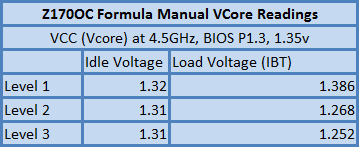
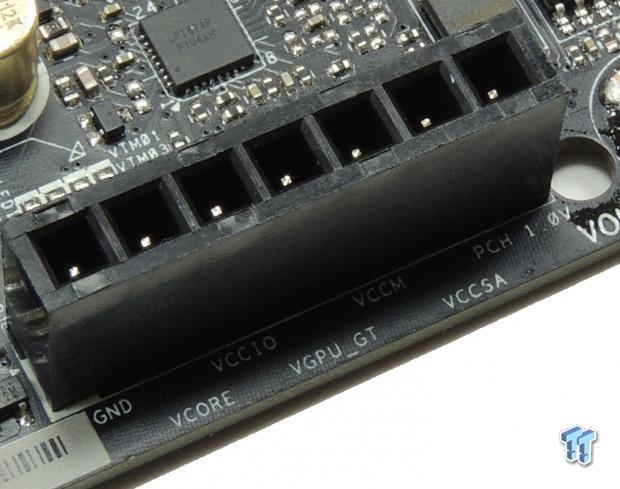
There are multiple LLC options and I only picked the three most effective. Level 1 is the strongest with a voltage increase under load, which is what you want for extreme overclocking situations. As you increase the voltage applied, the LLC levels will become less effective, meaning Level 1 might increase only a few millivolts at 1.8v+.
Memory Overclocking
I have decided to expand the overclocking tests to the following:
Test 1: 4x8GB (32GB) Corsair Vengeance LPX 2666MHz C16
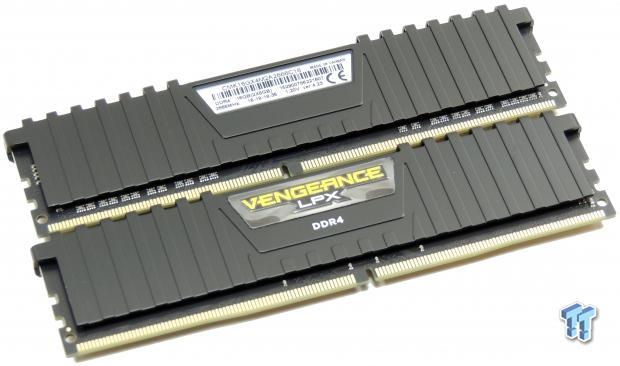
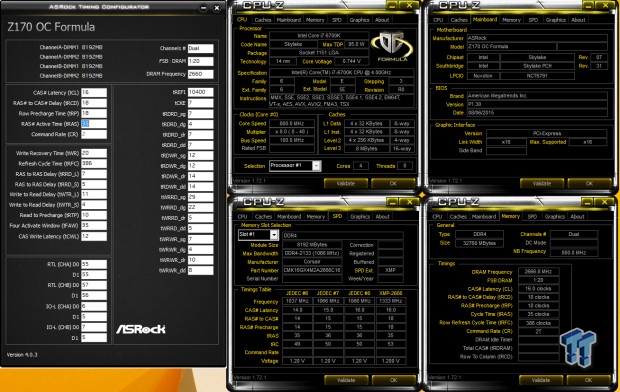
The motherboard runs four sticks each at 8GB at 2666MHz XMP without issue.
Test 2: 4x4GB (16GB) Corsair Dominator Platinum 3200MHz C16
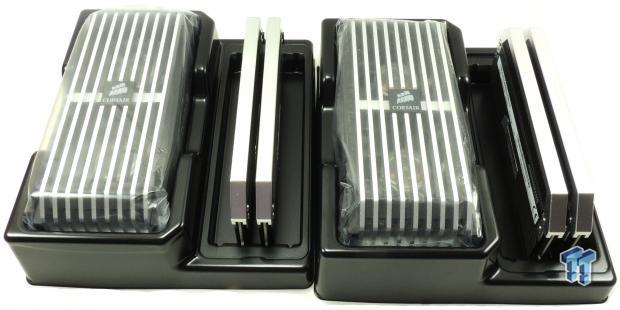
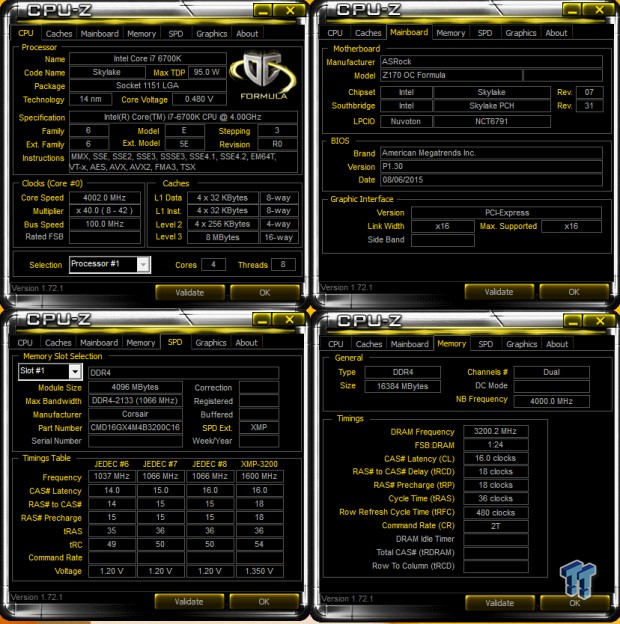
This kit meant for X99 works just fine on the Z170 OC Formula at 3200MHz with XMP.
Test 3:2x4GB (8GB) G.Skill Ripjaws V 3600MHz C17
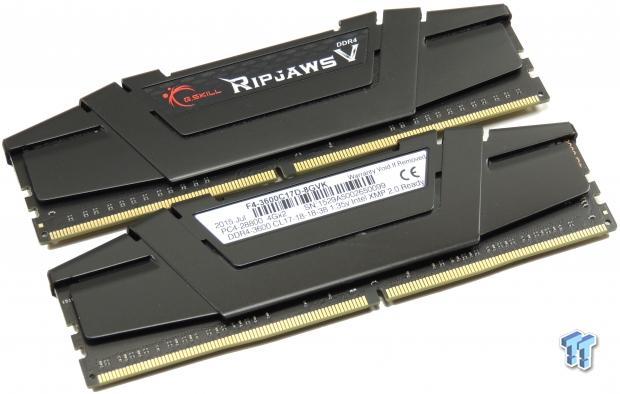
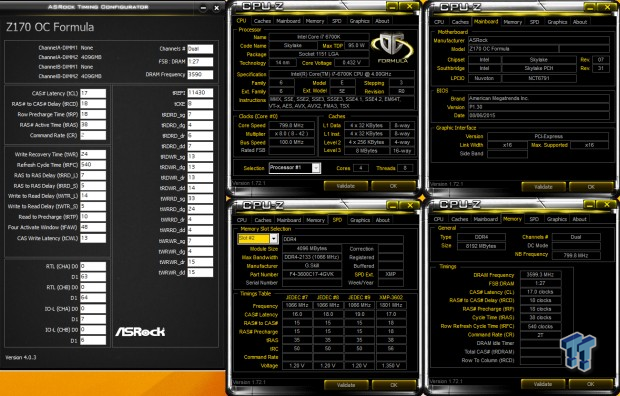
This 3600MHz G.Skill kit works perfectly on the Z170 OC Formula, which makes it one of a few Z170 boards capable of running this kit and other high speed DDR4 kits with ease.
CPU, Memory, and System Benchmarks
CINEBENCH 11.5
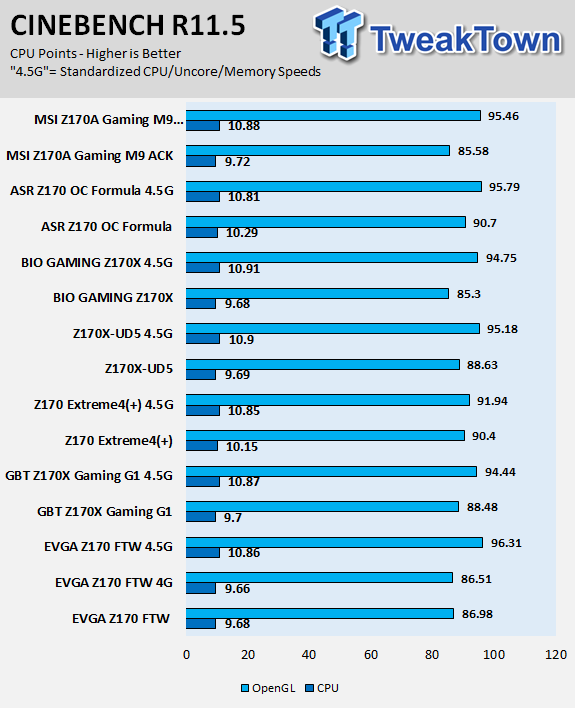
wPrime
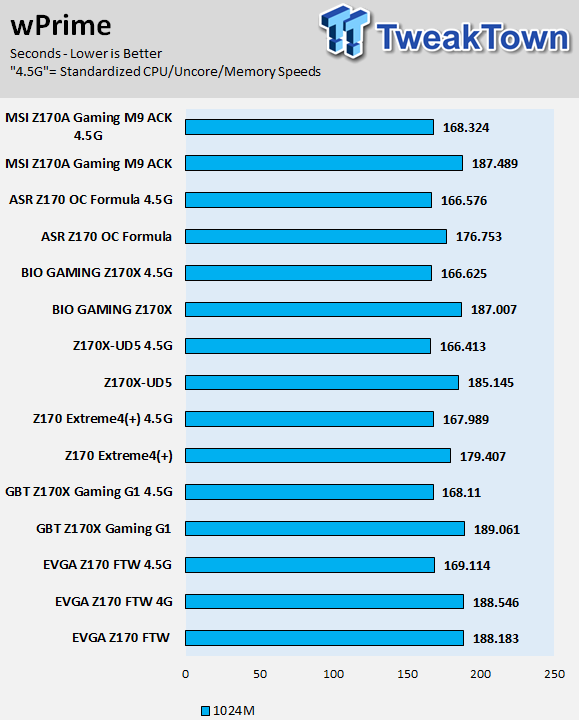
AIDA64 AES and HASH
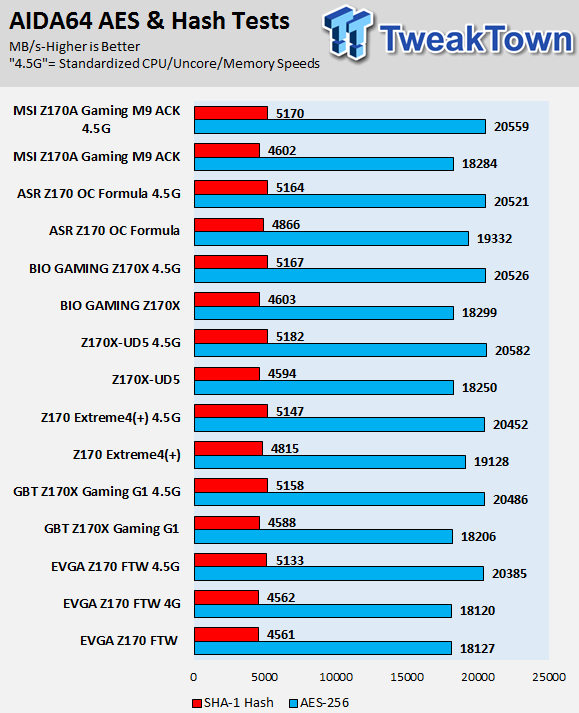
AIDA64 FPU
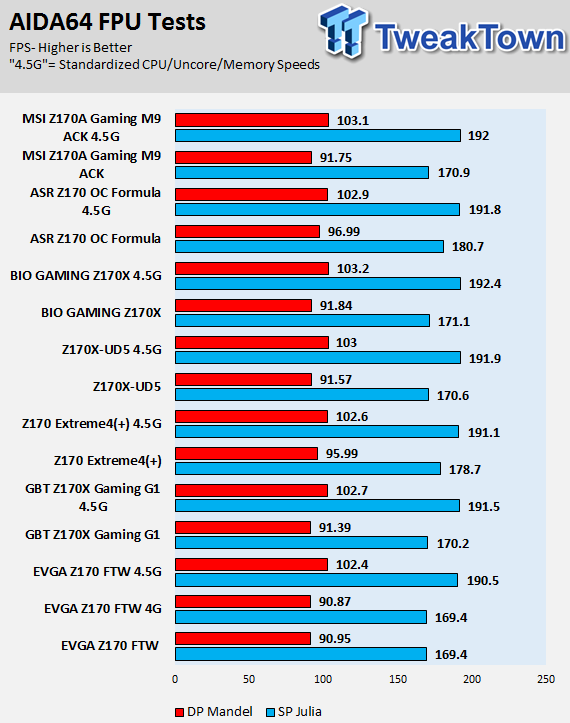
AIDA64 Memory
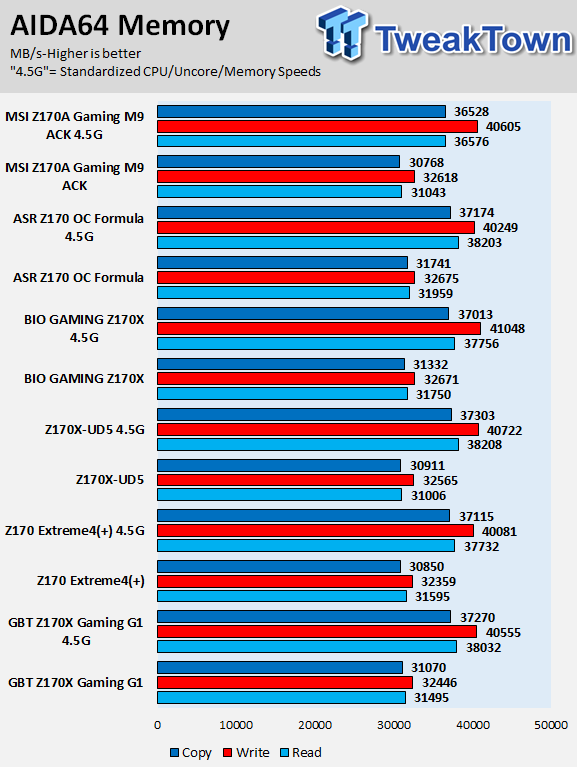
PCMark8 Home Test
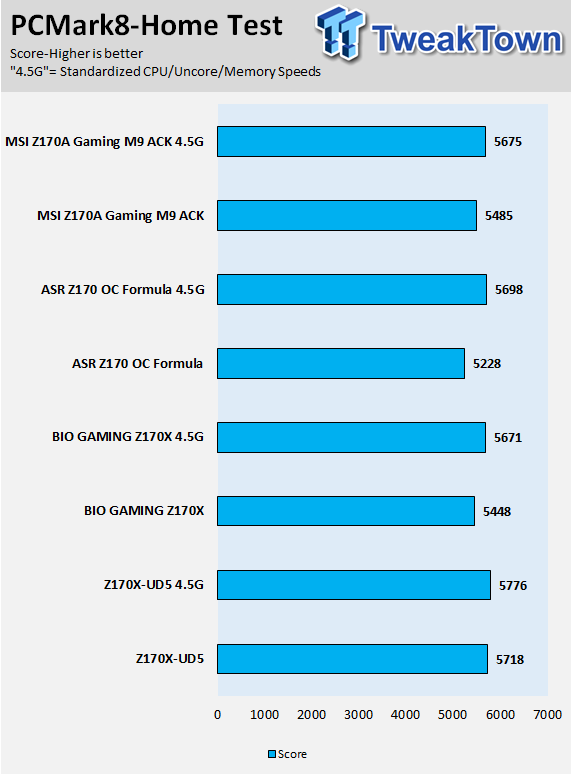
3DMark: Cloud Gate
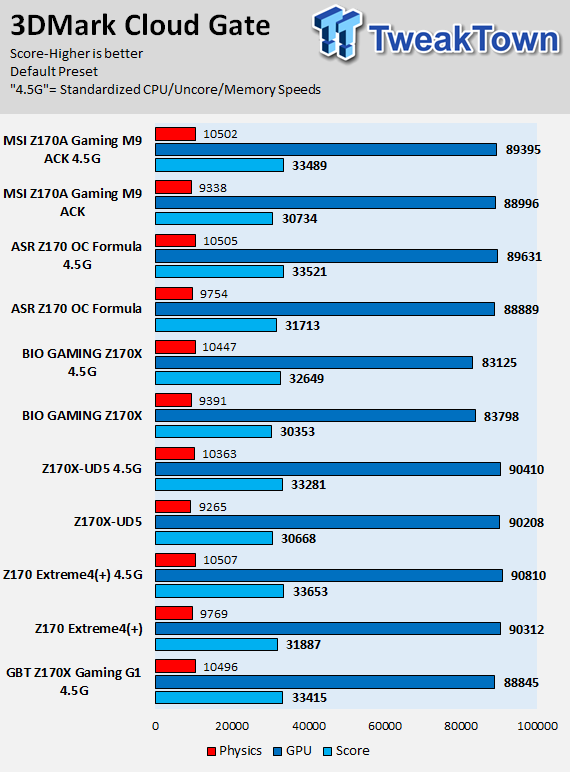
3DMark: Fire Strike
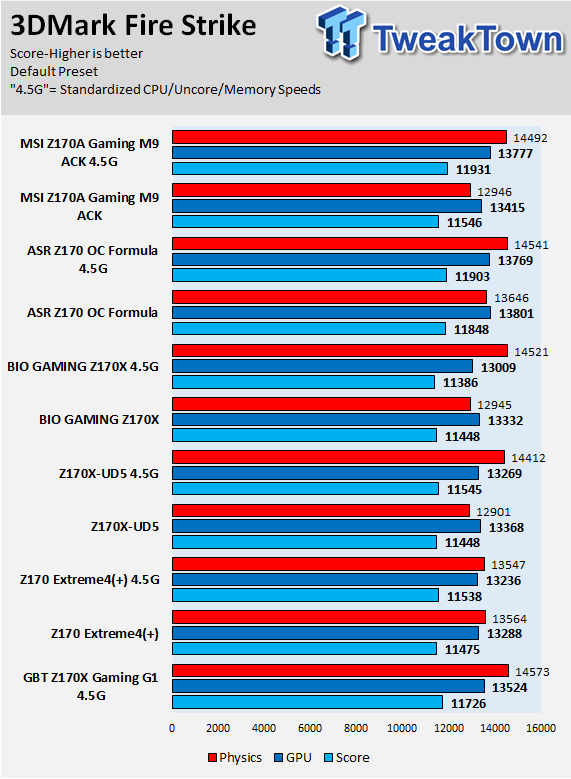
3DMark: IceStorm
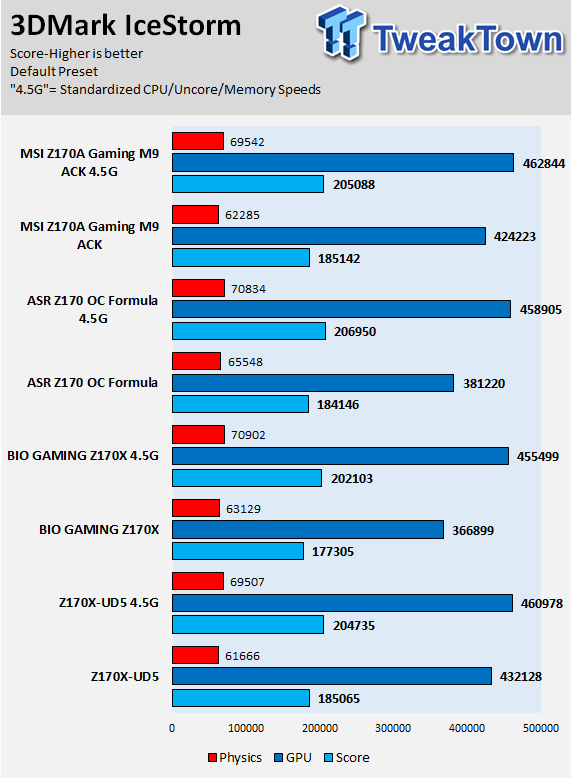
Resident Evil 6
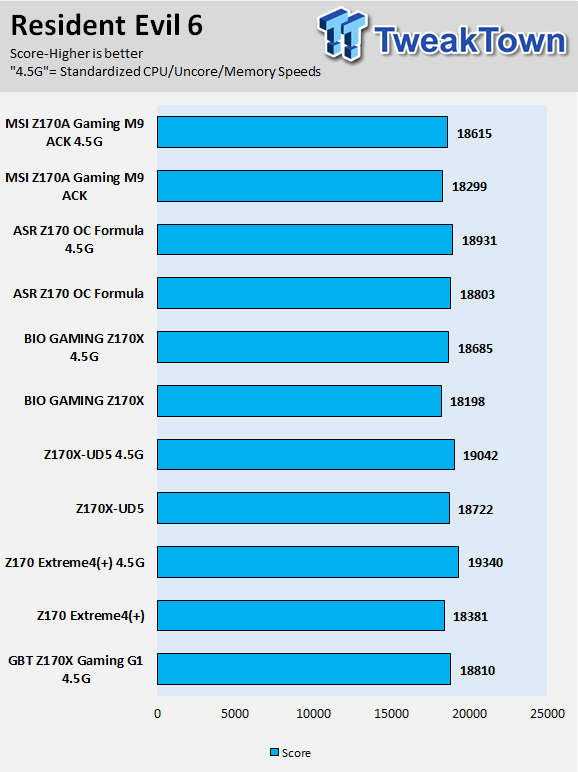
ASRock's Z170 OC Formula is a very strong performer when it comes to CPU and memory performance when it's at the same settings as other boards. Graphics performance is also decent, but the board seems like it is tuned for 2D performance by default. ASRock is using Intel's default Turbo profile and isn't using the "multi-core enhancement" which is actually there as a setting.
Some motherboard reviewers put a lot of weight into motherboard CPU, memory, and GPU benchmarks, but for me CPU, memory, and GPU benchmarks on motherboards should be more about finding anomalies and I do that at standard settings (4.5G in graphs). I believe that the system IO benchmarks on the next page are more important and they do tend to differ more from one model to the next.
System IO Benchmarks
CrystalDiskMark SATA6G:
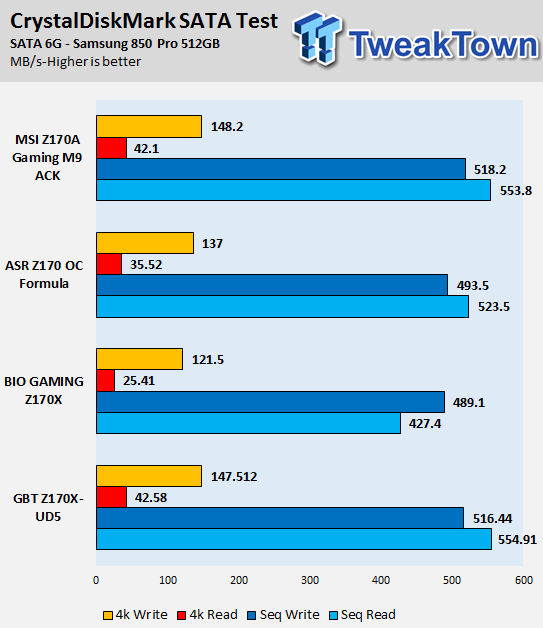
CrystalDiskMark M.2:
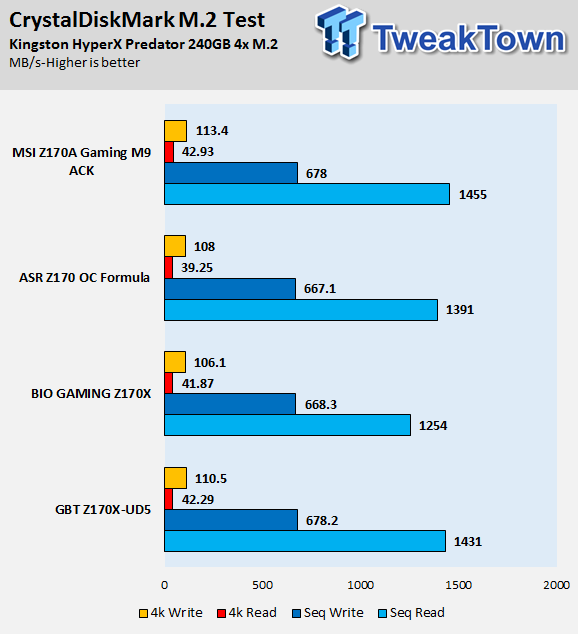
CrystalDiskMark USB 3.0:
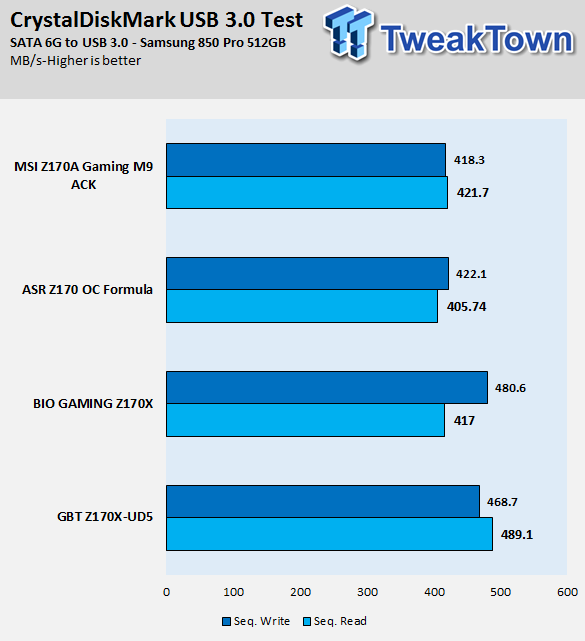
ixChariot Network Throughput:
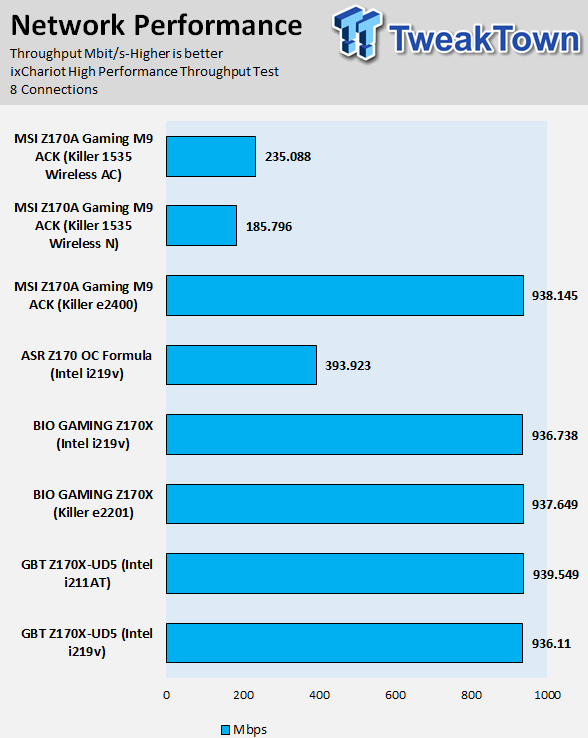
Overall storage and networking performance is quite good and consistent with what I expect from Z170 motherboards. The Z170 OC Formula is one of few Z170 motherboards with three M.2 ports. To RAID the M.2 ports, each port needs to be switched with two SATA6G ports, meaning all the SATA ports from the Intel PCH are disabled when all the M.2 slots are filled. It also means that all SATA and half the M.2 bandwidth for each slot is routed through a quick switch, which inherently introduces a tiny bit of latency for SATA testing.
Audio RMAA 5.5:
I disable all audio features, set the correct bit rates, and then test the audio with a loopback test.
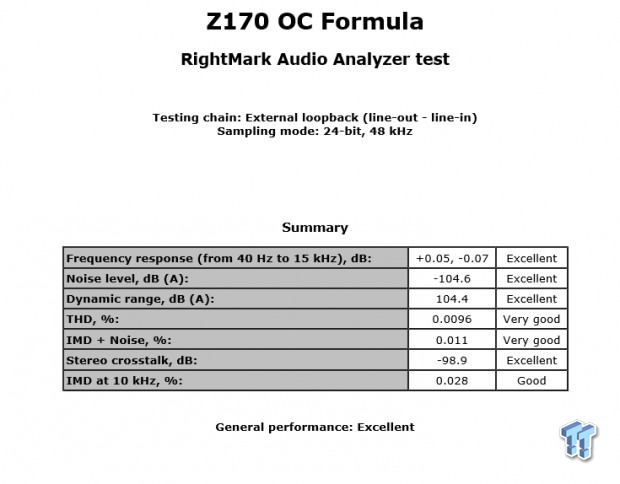
Sound Judgment by Ear: Very Good. Audio quality is high and the amplifiers boost is noticeable. There are 5 ratings for audio: 1. Problems, 2. Okay, 3. Acceptable, 4. Very good, 5. Excellent
Thermal Imaging and Power Consumption
System power usage is measured at the AC/DC PSU (the Corsair AX1200i) which I have connected to another system to measure the test system, and as a backup I have a wall meter to verify. The CPU power is measured through the 8-pin connector, which is hooked up to a hall effect IC, which measures current and puts out a voltage in proportion to the current. That voltage is logged by a National Instruments ADC, which logs the DC voltage level that I then convert into current.
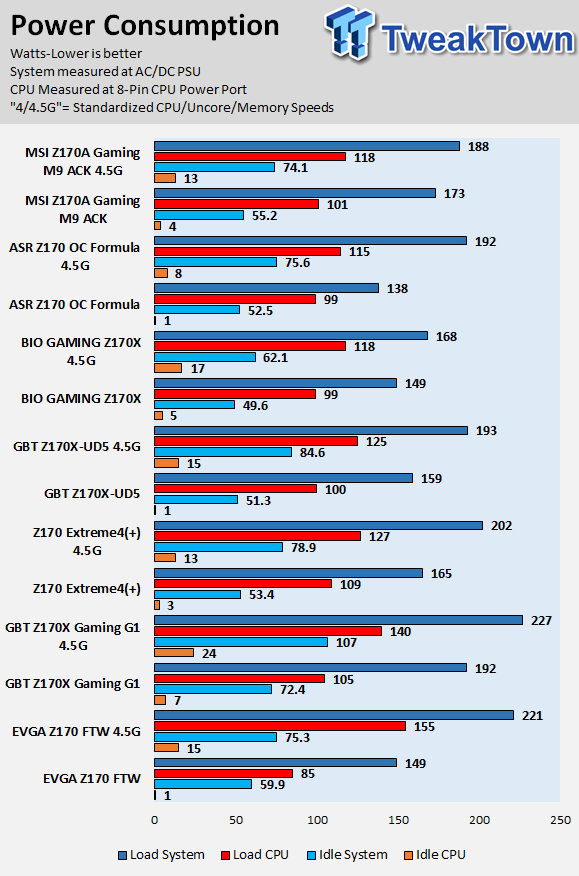
Note on Thermal Images: In the temperature section, we use our Seek thermal imaging camera to capture the surface temperatures of major components on the board. I look at the VRM and then all other things that light up the screen. If there is something to worry about, then I will state it, otherwise I will just show the hotter running parts of the board for fun. Unless some component is over 80-90C, then there really isn't anything to worry about.
All systems will act differently, so I will look for commonalities, such as how far from the VRM the heat spreads through the PCB and the difference in temperature between the front side and backside of the PCB. Keep in mind, the majority of the heat from the VRM goes into the PCB as it is a giant soldered on copper heat sink. A larger difference in temperature between the back and front of the PCB points towards a more effective heat sink.
Thermal Testing at Stock Speeds:
The image on the left is always at idle and the image on the right is at load. During ALL TESTS, fans above the VRM that cool the CPU cooler's (Corsair H110i GT) radiator are turned on to high (12v).
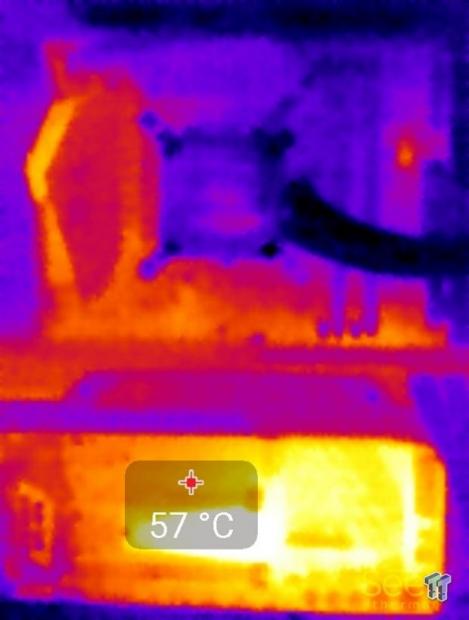
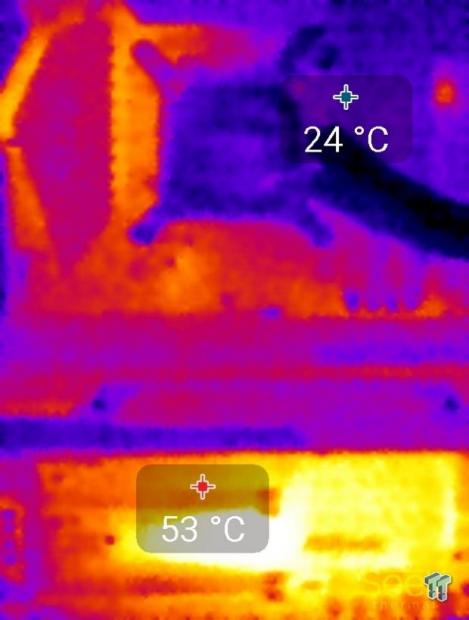
Full frontal.
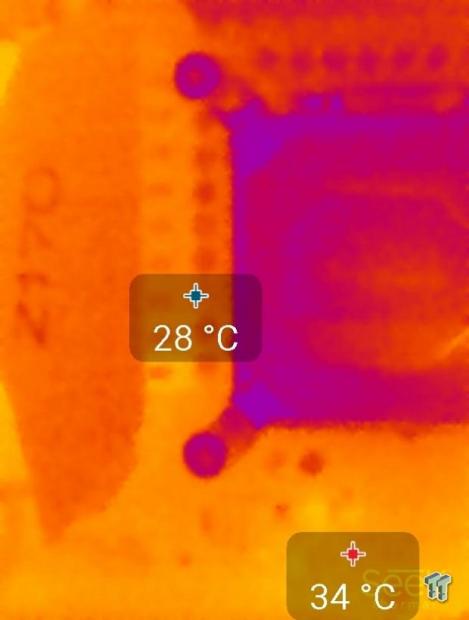
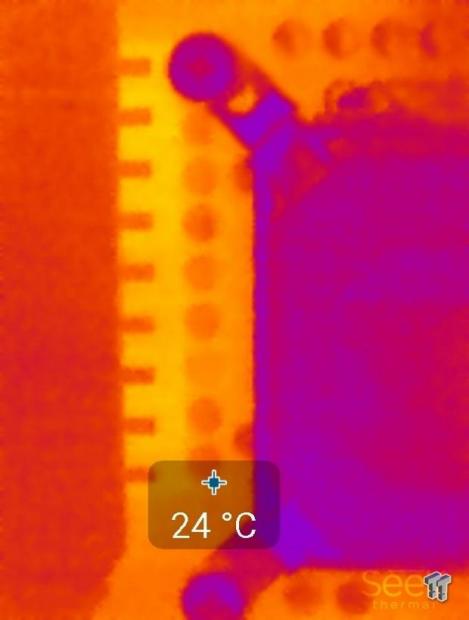
Up-close of the front of the VRM.
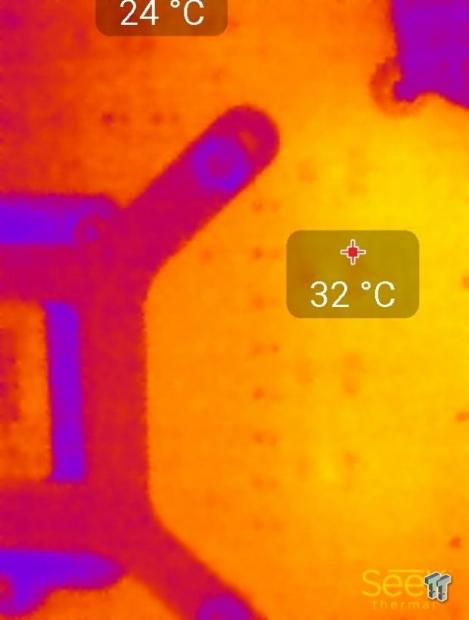

Up-close of the back of the VRM.
Thermal Testing at 4.5GHz Overclocked Speeds:
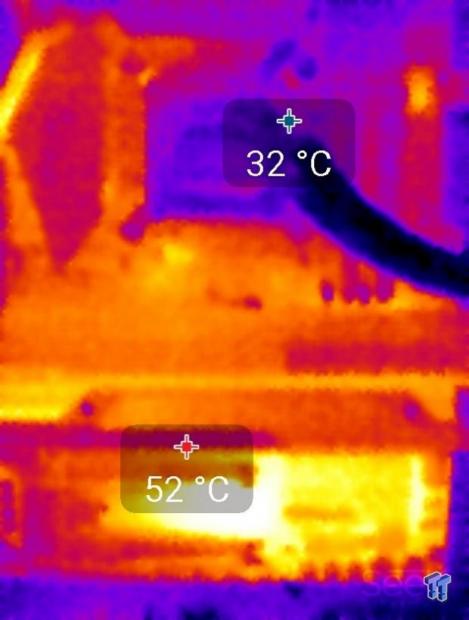
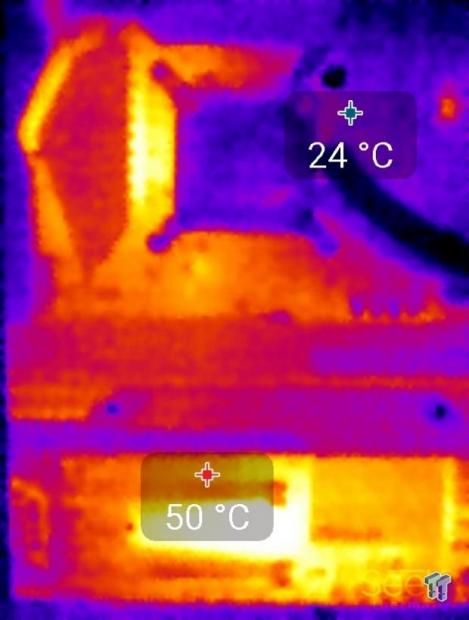
Full frontal.
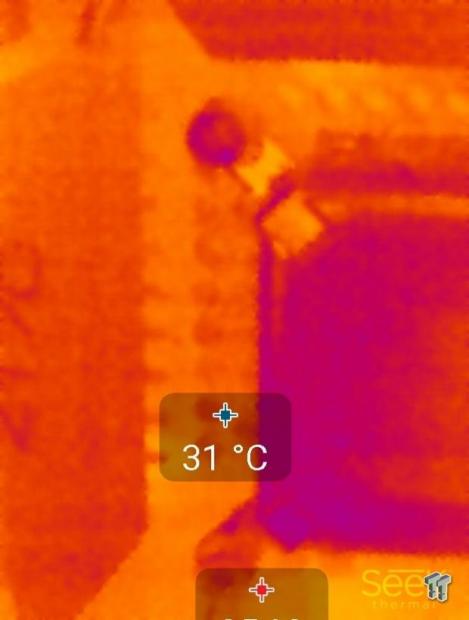
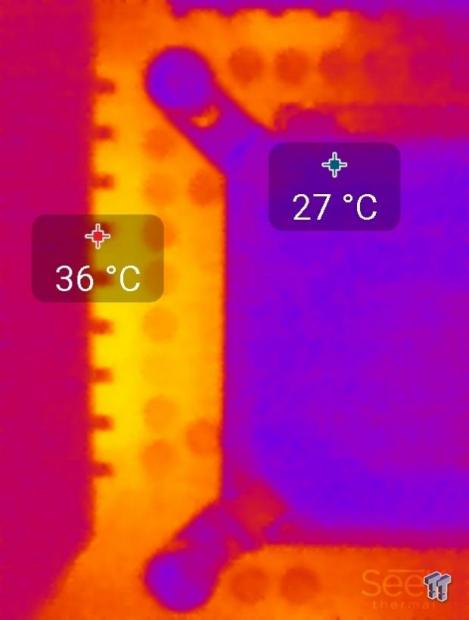
Up-close of the front of the VRM.
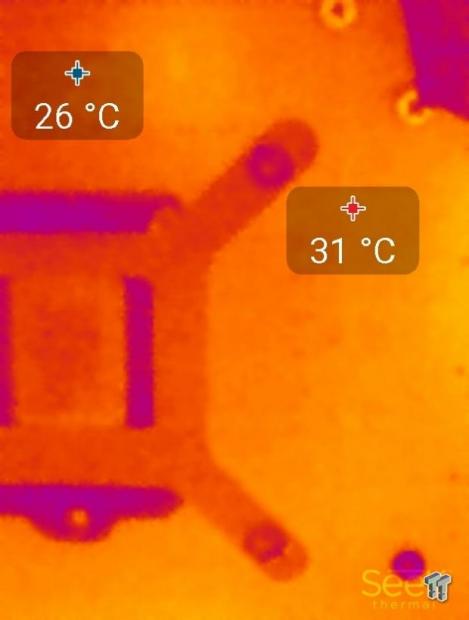
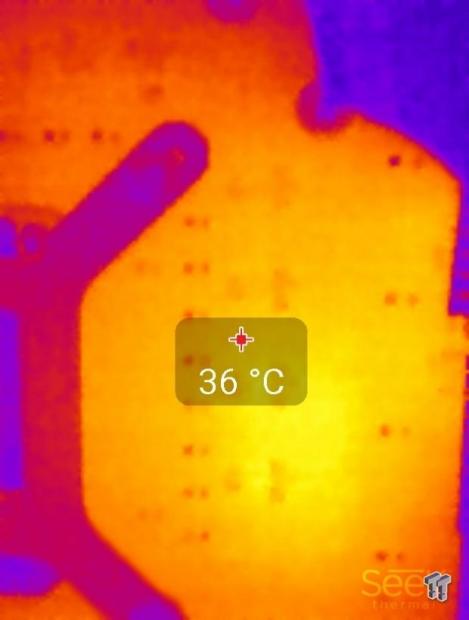
Up-close of the back of the VRM.
The VRM on the Z170 OC Formula is one of the better ones I have seen on a Z170 motherboard. The heat sinks work very well to dissipate heat; the back of the PCB doesn't even increase in temperature much from idle to load conditions at stock. Temperatures all around are pretty low compared to other Z170 motherboards I have tested and it does seem like power savings modes are enabled at idle. The temperatures when overclocked are basically what I have seen on many motherboards at stock. Overall, the Z170 OC Formula has an excellent VRM.
Anything under 60C is great, 60-80C is acceptable, and anything above 80C is a bit worrisome (if at stock).
What's Hot, What's Not & Final Thoughts
This is where you can fast forward to the final section of the review, and get a quick recap and points on the ASRock Z170 OC Formula.
What's Hot
Strong Overclocking Feature-Set: Not only is the board able to overclock the CPU and memory very well, but it also has features that make overclocking much easier. The Rapid OC buttons facilitate higher CPU-Z validations and on-the-fly multiplier and voltage configuration. This is one of a handful of motherboards able to take my G.Skill 3600MHz kit and overclock it to 3600Mhz easily using XMP. The motherboard's compatibility with higher speed kits is very good and that is very important for a Z170 overclocking motherboard since CPU overclocking is very similar on most motherboards.
Powerful CPU VRM: ASRock is using a different PWM and VRM setup on the Z170 OC Formula than they use on their other Z170 motherboards. Instead of the Intersil PWM and PowerPAKs that ASRock uses on most of its motherboards, the Z170 OC Formula uses an International Rectifier PWM and NexFETs. The change of PWM provides more overclocking settings and the change of MOSFETs provides a much cooler running VRM. The thermal camera shots prove that temperatures on the VRM are overall much lower than most other Z170 motherboards.
Three Full Speed M.2 Slots: ASRock's Z170 OC Formula is one of few motherboards that provide three 4x PCI-E 3.0 M.2 slots that can RAID. This ability is great for the PCMark benchmark since it tests storage as part of the benchmark. Putting three Samsung SM951 SSDs in RAID used to be a dream for some, but now with the Z170 chipset and the Z170 OC Formula, it is a reality.
Lots of extra connectivity: Since using all three M.2 slots will leave all the Intel SATA ports disabled, ASRock added four extra SATA ports with two ASMedia controllers. ASRock also uses hubs to expand PCI-E lanes and USB connectivity.
4-Way CrossFireX: Without using a PEX8747 chip to expand CPU PCI-E lanes, ASRock is using a mixture of PCH and CPU lanes to provide 4-way CrossFireX capability. Since it doesn't have the PEX8747, latency is much lower than if the board did, but 4-way SLI isn't possible.
What's Not
Many Non-Overclocking Features on an Overclocking Motherboard: ASRock has surprisingly provided the Z170 OC Formula with many third-party controllers for extra SATA ports and a USB 3.0 hub for more internal USB 3.0. Not to mention that the audio area of the motherboard is upgraded as well. These extra non-chipset features increase the price of the product. While some hardcore overclockers would rather the motherboard not have any extra features to bring down the price, the truth of the matter is that it's hard to sell a stripped down motherboard.
Final Thoughts
ASRock's Z170 OC Formula is listed at $253 on Newegg at the time of writing. This price reflects a premium for the overclocking capabilities of the motherboard. If you want to get some extreme overclocks out of the Z170 platform, and I mean very extreme memory overclocks, then you will need a motherboard aimed at extreme overclocking. Memory overclocking has to be tuned individually on each board and at this point in time all the manufacturers are tuning their top overclocking models. That is why the Z170 OC Formula overclocks memory much better than the majority of other models.
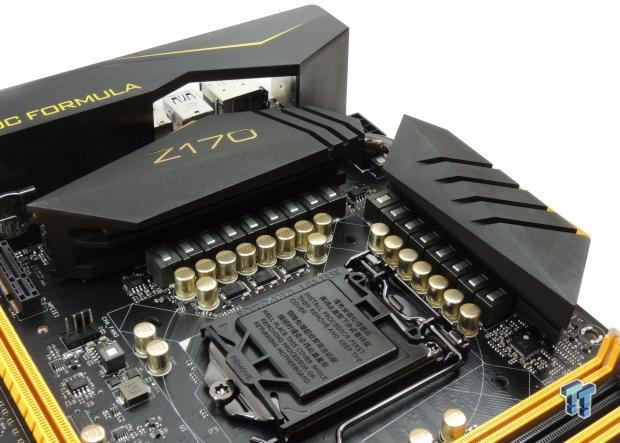
The Z170 OC Formula also has some pretty crazy storage capabilities; the ability to RAID three M.2 slots and the PCI-E layout make this board a storage-lover's dream as well. The truth of the matter is that CPU overclocking is pretty much the same on most Z170 motherboards, and if you need support for memory over 3400MHz at this time, then you will need an overclocking series motherboard, and the Z170 OC Formula is ASRock's overclocking series board.

| Performance (including Overclocking) | 97% |
| Quality including Design and Build | 93% |
| General Features | 93% |
| Bundle and Packaging | 89% |
| Value for Money | 90% |
| Overall | 92% |
The Bottom Line: If you are in the market for a new motherboard with crazy overclocking hardware and features, coupled with a layout and design aimed at taking down world records, then the Z170 OC Formula from ASRock is definitely worth a look.
PRICING: You can find products similar to this one for sale below.
 United
States: Find other tech and computer products like this
over at Amazon.com
United
States: Find other tech and computer products like this
over at Amazon.com
 United
Kingdom: Find other tech and computer products like this
over at Amazon.co.uk
United
Kingdom: Find other tech and computer products like this
over at Amazon.co.uk
 Australia:
Find other tech and computer products like this over at Amazon.com.au
Australia:
Find other tech and computer products like this over at Amazon.com.au
 Canada:
Find other tech and computer products like this over at Amazon.ca
Canada:
Find other tech and computer products like this over at Amazon.ca
 Deutschland:
Finde andere Technik- und Computerprodukte wie dieses auf Amazon.de
Deutschland:
Finde andere Technik- und Computerprodukte wie dieses auf Amazon.de
Similar Content
Related Tags
